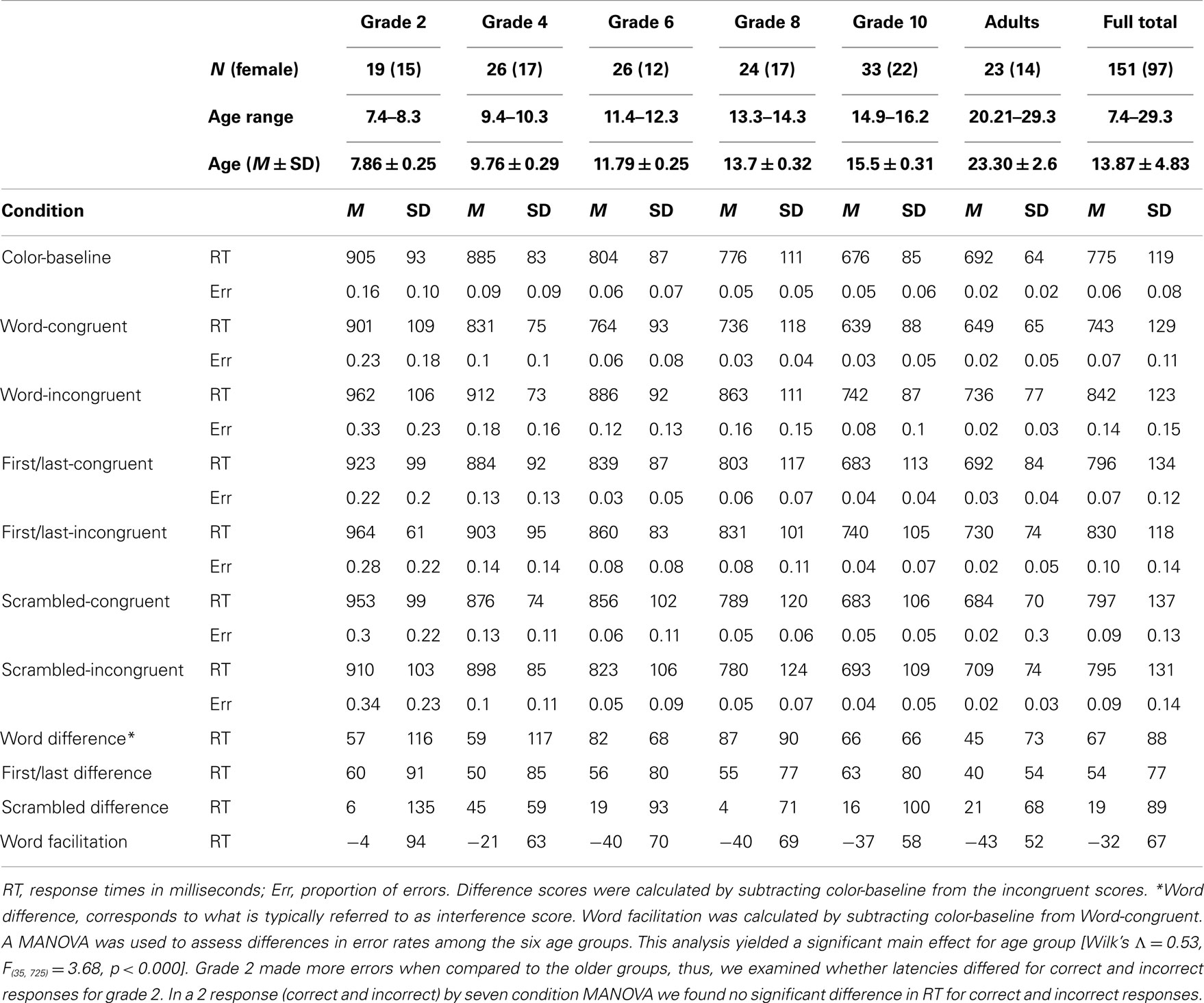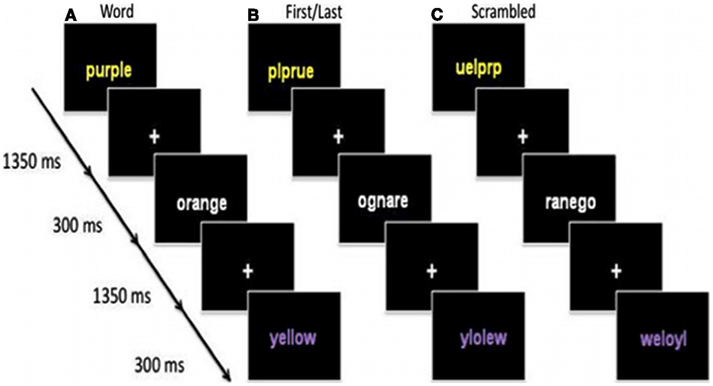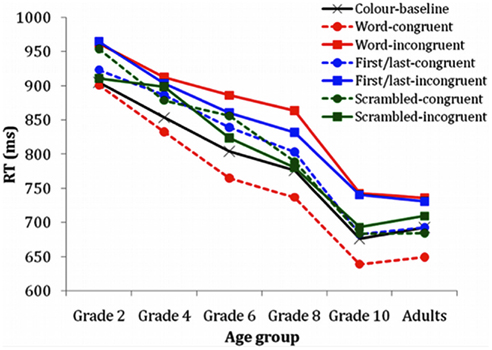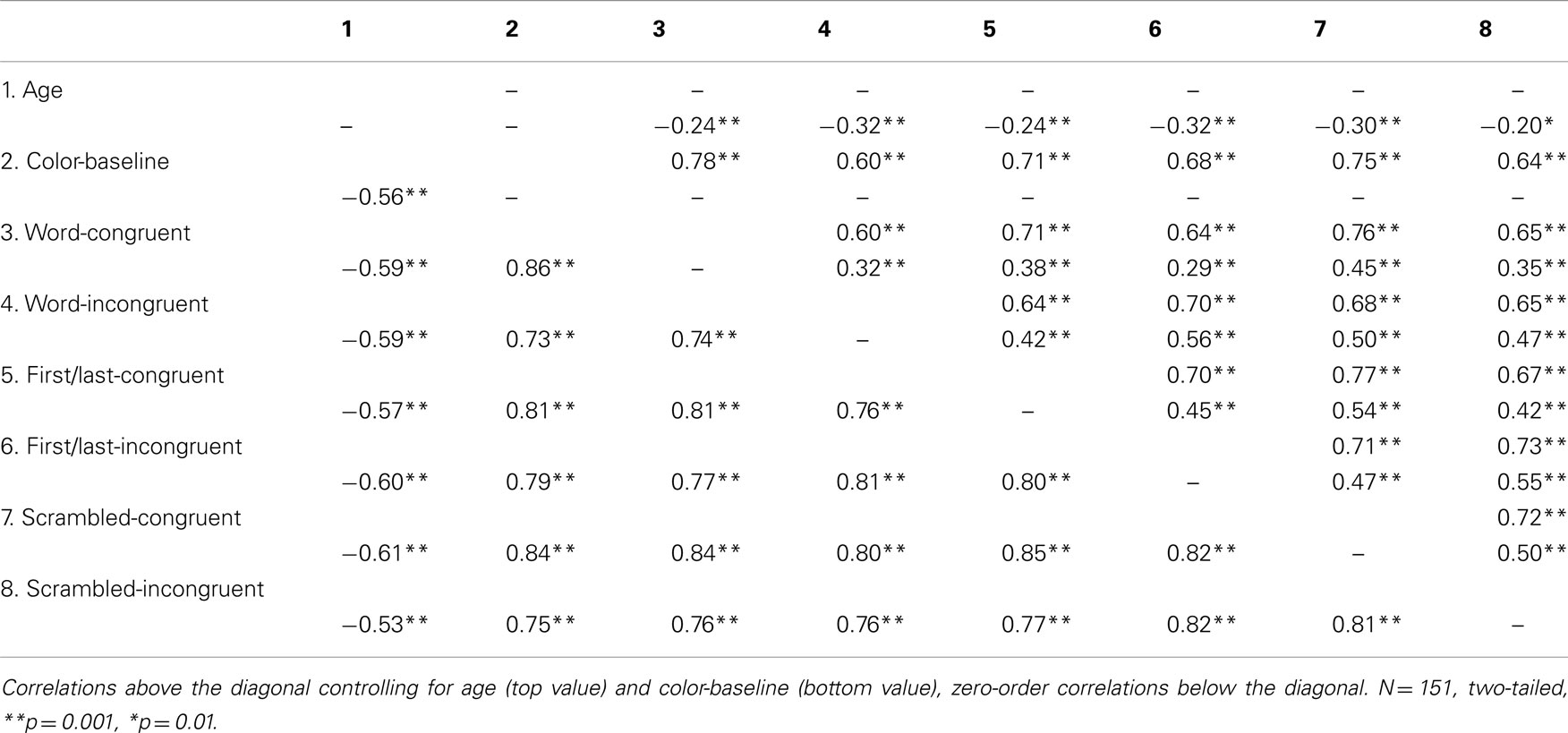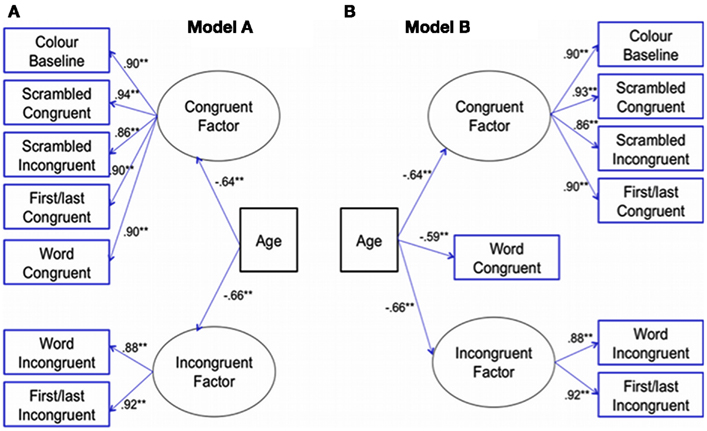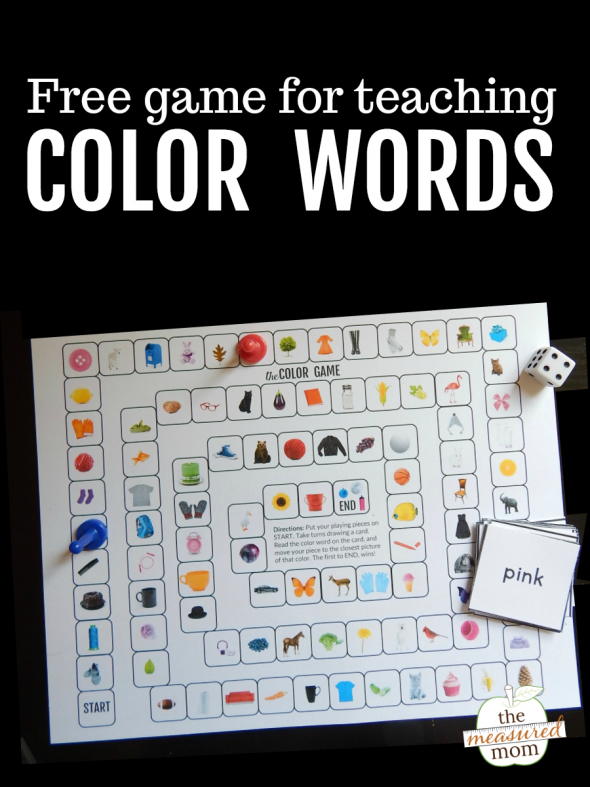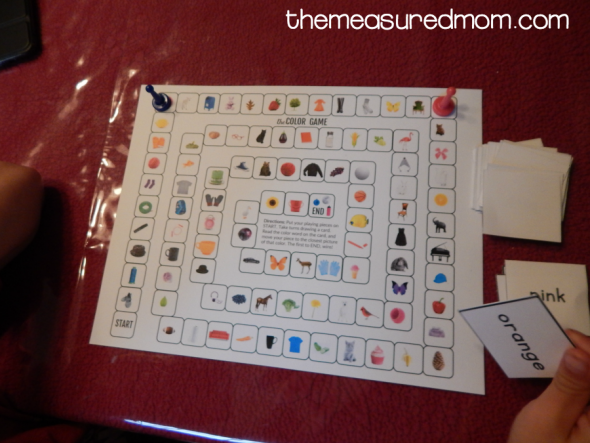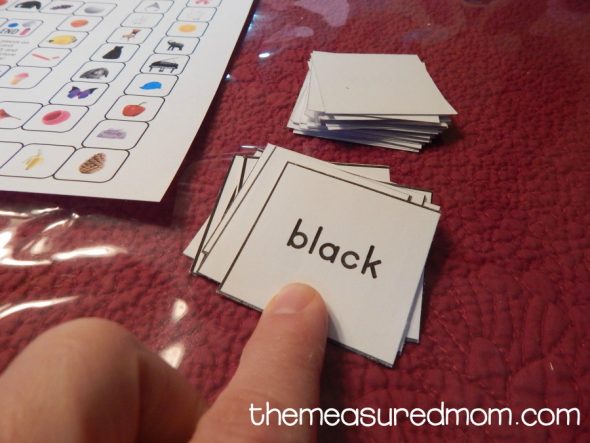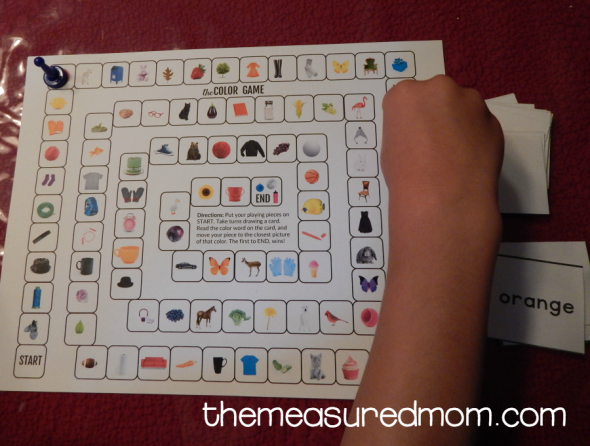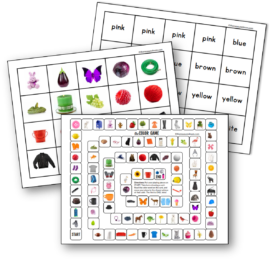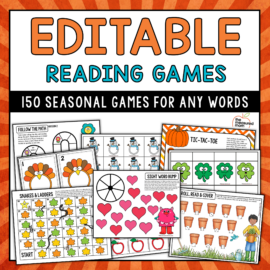I had to have a sudden change of plan in a recent cover lesson when I realised that students who had been studying from books full of instructions like “Colour the T-shirt red” for almost two years couldn’t read a single colour word. After my initial shock that they hadn’t at least picked something up and satisfaction that I must be doing something right in my regular classes, some additional reflection made me realise that despite all my efforts my own (very) young students hadn’t exactly gained full mastery of telling “blue” from “black”. This article is therefore a mix of tried and trusted techniques to get students reading and responding to colour words, with some ideas I’ve come up with more recently to teach reading colour words more quickly and effectively. For students who don’t know (spoken) English colour words yet, there is another article on this site on How to Teach Colour Vocabulary in ESL Classes.
My top tips for teaching colour word recognition are:
— Be systematic/ Plan ahead
— Start early and start easy/ Give lots of help, and then take it away
— Focus their attention
— Grade carefully
— Combine colour words with other phonics practice
— Replace spoken prompts with written prompts
— Let students choose
— Merge writing and reading
— Use picture books/ Use stories
— Use songs
To help you do all those things, you will need:
— Colour flashcards
— Double sided colour flashcards with colour words on one side and colours on the other
— Sets of colouring pencils or felt-tip pens
— Coloured board pens or coloured chalk
— A guide matching colour words and colours (on a poster, on a worksheet and/ or at the back of students’ books)
— Objects of different colours around the classroom
The tips are explained in more detail below, with instructions on how to use all those things.
Systematic teaching of colour word recognition/ Planning teaching of colour word recognition
Before you start teaching colour words recognition, it is worth deciding:
— What words you will teach them to read
— What order you will teach the words in
— What help you will give them
— How you will (slowly) take that help away
More info on how to decide all of those things is explained below.
Starting colour word recognition early and easily/ Giving lots of help, and then taking it away
The first time my students see colour words, they might not even realise that they are doing such a thing. After some practice with identifying the colours on flashcards, I turn the flashcards over to show (just) the colour words on the other side of the cards. I then test students’ memory of where each colour is, for example by getting them to slap the card that I say. This means that students can use their memory of where each card is and/ or whatever they can make out from the colour words to help them remember the location of each colour. I then play the same memory game with the cards mixed up after turning them over, mixing the cards more and more each time to make sure that students need to pay more attention to what is on the written side of each card to know which card is which. When they are starting to recognise the colours from the colour words, you can move onto dealing out the cards with the colour word side up and asking them to find each colour without having been able to see the other side of the card.
A similar system of slowly taking away help can be used with colouring in activities. A good start is with an activity where the spaces have colour words written in, e.g. “red” written in the apple. The first time you do this kind of activity, give students a guide to what each colour word means (a patch of green next to “green”, etc) at the bottom of the colouring in page for them to make it easy for them to check the meaning of each word before they colour it in. The second time that you do colouring with the colour words written in each space, students should be able to do it by checking with a poster with a guide to colour words on the wall, making them use their short-time memory more than they needed to when the guide to the words was on the same page. The time after that, it’s best if they do it with the guide to colour words on another page of their book (e.g. in the back cover) or on the back of the worksheet, so that they only check if they really need to and so that the shape and letters of the colour word spend more time in their memory each time.
Focusing students’ attention
Other help that you can give students and then take away is based on the idea of focusing their attention. For example, if you want students to use the first letters or other particular key letters to make reading quicker and easier, you could underline those letters on the flashcards or worksheets (“orange”, “pink”, etc). In a similar way, if you want to use word shapes, you could outline the colour words with black shapes. You can also put these letters or shapes in the spaces that they should colour, e.g. “p” for purple in the aubergine.
Focusing their attention can also be used to make sure that they don’t rely too much on things like first letters. For example, when it is time to deal with both “black” and “brown” together, it’s better to underline letters other than the first one, e.g. the “ck” in black and “wn” in brown. The same thing can also be done by writing up colour words on the board starting with the most useful letters rather than in order left to right as we usually write (e.g. “___c_” then ___k” then “b__ck” then “bl_ck” and finally “black” for “black”).
Grading colour words carefully
As well as deciding what help you will give students and then slowly taking that help away, you also need to decide what colour words you will introduce and in what order. This should be based on both how easy the word is to understand and produce orally and also on how easy or difficult it is to read. Note that difficulty of reading is often not the same as the difficulty of writing something. For example, you’ll probably want to introduce “orange” first, given how easy it is to recognise the letter “o”, despite the fact that it is tricky to write because the “-ange” bit isn’t really phonetical.
The most difficult ones to read are ones which share the same first letters, particularly “black”/ “blue” and “green”/ “grey”, so it’s best to leave out “blue” and “grey” until they have totally mastered “black” and “green” (or vice versa).
Combining colour words with other phonics practice
There are two ways of combining learning colour words with more traditional phonemics practice such as learning “A, a, alligator”, “B, b, bag”, etc. The first is simply to make sure that you spend some time on that more general phonemic practice. This means that when students get stuck you can point at the “o” in orange and remind them that it’s the same sound as in “O, o, octopus”. The second way you can combine colour words with other phonics is to actually include colour words in a pack of alphabet phonics cards, e.g. having “B, b, blue” as the second card after “A, a, alligator”.
A nice game for combining both colour words and other phonics is for students to pick two cards, one colour word card and one word card for a letter of the alphabet. Those cards then decide on the colour for that thing, e.g. letting them colour the apple purple if they pick “A, a, apple” and “purple” or making the whole class draw a “pink girl” if they pick those cards.
Replacing spoken prompts with written colour word prompts
Almost any game which can be played with people saying colour words can also be played by showing colour word flashcards instead. For example, I often quickly move on from saying “Touch something red” to saying “Touch something…” and holding up a colour word to finish the sentence.
Letting students choose colour words
Another way of replacing spoken colour words with written ones is to get students to pick colour word flashcards each time that they can choose the colour of something. For example, if they usually ask for particular colour stickers for rewards, you can ask them to pick from a pack of colour word cards spread across the table rather than asking orally, e.g. giving them a red sticker if they pick the “red” card. They can also pick from a pack of colour word cards to get a particular coloured pencil for the next colouring in task, a particular pen to write on the board, particular colour paper or card, etc.
A nice thing about this choosing idea is that it can be used even before students can read the colour words as it is doesn’t matter too much if they get a different colour to what they wanted. They also become very motivated to be able to identify the colour words well enough that their pick is no longer random.
Merging writing and reading
One of the best ways of teaching students to read colour words is to get them writing them as soon as possible. To do this you can use the same philosophies above of giving them help and then taking the help away, etc. For example, the first time that they write colour words they could do so within empty letters which are already on the page inside objects which are usually each colour, e.g. writing inside hollow “yellow” letters inside a banana. After copying within word shapes, the other stages could then be:
— Copying first letters
— Copying other key letters
— Copying whole colour words
— Writing their own choice of colour words
— Writing the right colour word in pictures, only referring to a spelling guide if they need to
— Writing colour words in sentences
Using picture books/ stories to teach colour word recognition
Many picture books are suitable for this topic due to having a focus on the colours of the animals, foods, etc in them. However, picture books with colour words often have one of two problems: pictures which give too much info and so mean that students don’t have to read, or too much text for students to be able to pick out the colour words. To solve both of these problems, I usually put Post-It notes on top of the pages, e.g. covering the picture (to be revealed once they have tried to read the colour word) or covering the whole text and writing just a colour word on top. As long as you don’t leave it on too long, with a board book you can also underline important words with a whiteboard pen and then delete the lines.
Using songs to teach colour word recognition
This is another example of replacing spoken prompts with written ones. While singing a song, I stop singing when it comes to the colour word and hold up a colour word card for students to sing, point at, touch, etc.

Young children struggle with color concepts, and the reason for this may have something to do with how we use the words that describe them.
A In the course of the first few years of their lives, children who are brought up in English- speaking homes successfully master the use of hundreds of words. Words for objects, actions, emotions, and many other aspects of the physical world quickly become part of their infant repertoire. For some reason, however, when it comes to learning color words, the same children perform very badly. At the age of four months, babies can distinguish between basic color categories. Yet it turns out they do this in much the same way as blind children. «Blue» and «yellow» appear in older children’s expressive language in answer to questions such as «What color is this?», but their mapping of objects to individual colors is haphazard and interchangeable. If shown a blue cup and asked about its color, typical two-year-olds seem as likely to come up with «red» as «blue.» Even after hundreds of training trials, children as old as four may still end up being unable to accurately sort objects by color.
B In an effort to work out why this is, cognitive scientists at Stanford University in California hypothesized that children’s incompetence at color-word learning may be directly linked to the way these words are used in English. While word order for color adjectives varies, they are used overwhelmingly in pre-nominal position (e.g. «blue cup»); in other words, the adjective comes before the noun it is describing. This is in contrast to post-nominal position (e.g. «The cup is blue») where the adjective comes after the noun. It seems that the difficulty children have may not be caused by any unique property of color, or indeed, of the world. Rather, it may simply come down to the challenge of having to make predictions from color words to the objects they refer to, instead of being able to make predictions from the world of objects to the color words.
To illustrate, the word «chair» has a meaning that applies to the somewhat varied set of entities in the world that people use for sitting on. Chairs have features, such as arms and legs and backs, that are combined to some degree in a systematic way; they turn up in a range of chairs of different shapes, sizes, and ages. It could be said that children learn to narrow down the set of cues that make up a chair and in this way they learn the concept associated with that word. On the other hand, color words tend to be unique and not bound to other specific co-occurring features; there is nothing systematic about color words to help cue their meaning. In the speech that adults direct at children, color adjectives occur pre-nominally («blue cup») around 70 percent of the time. This suggests that most of what children hear from adults will, in fact, be unhelpful in learning what color words refer to.
C To explore this idea further, the research team recruited 41 English children aged between 23 and 29 months and carried out a three- phase experiment. It consisted of a pre-test, followed by training in the use of color words, and finally a post-test that was identical to the pre-test. The pre- and post-test materials comprised six objects that were novel to the children. There were three examples of each object in each of three colors—red, yellow, and blue. The objects were presented on trays, and in both tests, the children were asked to pick out objects in response to requests in which the color word was either a prenominal («Which is the red one?») or a post-nominal («Which one is red?»).
In the training, the children were introduced to a «magic bucket» containing five sets of items familiar to 26-month-olds (balls, cups, crayons, glasses, and toy bears) in each of the three colors. The training was set up so that half the children were presented with the items one by one and heard them labelled with color words used pre-nominally («This is a red crayon»), while the other half were introduced to the same items described with a post-nominal color word («This crayon is red»). After the training, the children repeated the selection task on the unknown items in the post-test. To assess the quality of children’s understanding of the color words, and the effect of each type of training, correct choices on items that were consistent across the pre- and post-tests were used to measure children’s color knowledge.
D Individual analysis of pre- and post-test data, which confirmed parental vocabulary reports, showed the children had at least some knowledge of the three colour words: they averaged two out of three correct choices in response to both pre- and post-nominal question types, which, it has been pointed out, is better than chance. When children’s responses to the question types were assessed independently, performance was at its most consistent when children were both trained and tested on post-nominal adjectives, and worst when trained on pre-nominal adjectives and tested on post-nominal adjectives. Only children who had been trained with post- nominal color-word presentation and then tested with post-nominal question types were significantly more accurate than chance. Comparing the pre- and post-test scores across each condition revealed a significant decline in performance when children were both pre- and post-tested with questions that placed the color words pre-nominally.
As predicted, when children are exposed to color adjectives in post-nominal position, they learn them rapidly (after just five training trials per color); when they are presented with them pre-nominally, as English overwhelmingly tends to do, children show no signs of learning.
Questions 1-4
The Reading Passage has four sections A-D.
Choose the correct heading for each section from the list of headings below.
List of Headings
i A possible explanation
ii Why names of objects are unhelpful
iii Checking out the theory
iv A curious state of affairs
v The need to look at how words are formed
vi How age impacts on learning colours
vii Some unsurprising data
1 Section A
Answer: iv Locate
2 Section B
Answer: i Locate
3 Section C
Answer: iii Locate
4 Section D
Answer: vii Locate
Questions 5-9
Complete the summary below.
Choose NO MORE THAN TWO WORDS from the passage for each answer.
The Hypothesis
Children learn many words quite quickly, but their ability to learn colour words takes longer than expected.
In fact, despite 5 many four-year olds still struggle to arrange objects into colour categories.
Answer: training trials Locate
Scientists have hypothesised that this is due to the 6 of the adjectives in a phrase or sentence and the challenges this presents.
Answer: post-nominal position Locate
While objects consist of a number of 7
Answer: features Locate that can be used to recognise other similar objects, the 8
Answer: meaning Locate of a colour cannot be developed using the same approach. As a consequence, the way colour words tend to be used in English may be 9 to children.
Answer: unhelpful Locate
Questions 10-11
Which TWO of the following statements about the experiment are true?
A The children were unfamiliar with the objects used in the pre- and post-test.
B The children had to place the pre- and post-test objects onto coloured trays.
C The training was conducted by dividing the children into two groups.
D Pre-nominal questions were used less frequently than post-nominal questions in the training.
E The researchers were looking for inconsistencies in children’s knowledge ot word order.
10. Answer: A OR C IN EITHER ORDER Locate
11. Answer: A OR C IN EITHER ORDER Locate
Questions 12-13
Which TWO of the following outcomes are reported in the passage?
A Average results contradicted parental assessment of children’s knowledge.
B Children who were post-tested using post-nominal adjectives performed well, regardless of the type of training.
C Greatest levels of improvement were achieved by children who were trained and post-tested using post-nominal adjectives.
D Some children performed less well in the post-test than in the pre-test.
E Some children were unable to accurately name any of the colours in the pre- and post-tests.
12. Answer: C OR D IN EITHER ORDER Locate
13. Answer: C OR D IN EITHER ORDER Locate
Introduction
The color-word Stroop task (Stroop, 1935) is a widely used measure that has been theorized to be an index of executive functioning such as interference control (e.g., van Mourik et al., 2005), selective attention and cognitive flexibility (e.g., Homack and Riccio, 2004; Charchat-Fichman and Oliveira, 2009), and response inhibition (Pocklington and Maybery, 2006). The Stroop task requires an individual to identify the ink color of stimuli as quickly as possible. Typically, participants are asked to name the color of the ink, of a list of “X”s (color-baseline condition) or the color of the ink of congruent color-words (i.e., the word red written in red ink; congruent condition). In the Stroop condition, the color of the ink is incongruent with the written word (i.e., the word blue written in red ink). Research consistently finds that it takes longer to name the color of the ink in the incongruent, Stroop condition. Many versions of the Stroop have been designed, such as the number Stroop and the emotional Stroop (MacLeod, 1991). When considering only the prototypical color-word Stroop, relative to the hundreds of adult studies, investigations over early development are scarce. Learning to read is a key contributor for detecting this effect, and as the color-word Stroop contains words it lends itself to orthographic manipulations. The main purpose of this study was to examine the effects of orthographic manipulation (i.e., changing letter-positions in color-words) on interference elicited by the Stroop task developmentally.
Comalli et al. (1962) were the first to use the Stroop with children and adults ranging from 7 to 80 years old (N = 235). Using 100-item cards they showed (a) colored rectangles (color-baseline), (b) color-words in black ink, and (c) color-words written in incongruent colors. Participants became progressively faster in responding to the three conditions as a function of age, but they were slowest on the incongruent colors. A large body of clinical and experimental research uses the color-word Stroop, such as in detecting deficits in inhibition in individuals with attention deficit disorder (e.g., Homack and Riccio, 2004; Schwartz and Verhaeghen, 2008 for meta-analyses). The majority of the studies using the color-word Stroop are individual difference rather than developmental studies. We found relatively few reports that examined three or more age groups of typically developing children and adolescence using the Stroop (Comalli et al., 1962; Schiller, 1966; Berninger et al., 1991; Armengol, 2002; Leon-Carrion et al., 2004; Pritchard and Neumann, 2004; Peru et al., 2006; Charchat-Fichman and Oliveira, 2009; Polderman et al., 2009), overall showing a negative relation between age and performance on the Stoop (i.e., as age increases, response times decrease).
Inhibitory control, assessed with measures other than the Stroop (e.g., Stop signal), also shows a protracted development from childhood to adulthood (Williams et al., 1999; Bedard et al., 2002; Davidson et al., 2006), although some suggest it develops very early (by grade 2; Schachar and Logan, 1990; Christ et al., 2001). It appears, however, that the rate at which inhibition develops changes as a function of age (Luna and Sweeney, 2004; Best et al., 2009; for reviews). Specifically, improvements in inhibitory abilities are easily detected in pre-school children (Montgomery and Koeltzow, 2010) yet improvements are also reported for middle-school children and adolescents (Leon-Carrion et al., 2004; Luna and Sweeney, 2004), with 13-year-olds still not attaining complete adult levels (Davidson et al., 2006). On average, younger children (6–8 years) are about 50 ms slower in stopping a prepotent response than older children (9–12) who in turn are about 30 ms slower than adolescents (13–17 years; Williams et al., 1999). The latter results are consistent with neuroimaging findings showing that the pre-frontal cortex, an area highly correlated with executive functions, continues to develop through childhood and adolescence (Kolb and Whishaw, 2003) and this protracted maturation is reflected in the development of inhibitory abilities (Luna, 2009). Meta-analysis evidence verifies that the pre-frontal cortex plays a key role on the Stroop performance in adults (Laird et al., 2005).
Developmental functional magnetic resonance imaging (fMRI) studies using the Stroop (Adleman et al., 2002; Marsh et al., 2006) have used a sub-vocal response modality, which the authors acknowledged was a limitation in their study due to lack of task compliance assessment during scanning (Adleman et al., 2002). Sub-vocal responding may also increase voluntary or involuntary movements that could compromise the quality of brain images. Therefore, with a future aim to study the brain correlates of orthographic effects in the Stroop, we designed our protocol by modifying the Stroop paradigm to be compatible for use with fMRI and incorporated a speeded, manual response.
Apart from presentation and response modality modifications, the Stroop paradigm has been adapted widely to investigate the effect of interference in many domains and in different contexts (MacLeod, 1991, 2005 for comprehensive reviews). Past studies modified the Stroop by altering pronounceability of non-words (e.g., “hrwd” and “swal”) and the meaning of words in relation to their color (e.g., “carrot” and “chair”); these were found to affect the intensity of interference (e.g., longer responses to “carrot” when written in incongruent ink color; MacLeod, 1991). Also, using only certain letters of the color word (e.g., the first letter; Regan, 1978 or the first three letters; McCown and Arnoult, 1981) were enough to elicit interference in adults; comparable investigations were not completed with children. Relevant developmental work was performed by Berninger et al. (1991), who showed children in grades 2, 4, and 6, color-words in which either two letters of the word (e.g., green, “en” printed in red) or single-letter combinations (e.g., green, “r” printed in red) were printed in incongruent colors, as well as whole words (e.g., green printed in red). The authors observed that students’ responses were slowest in the following order: word > single-letter > two-letter cluster. Berninger et al. (1991) did not include stimuli with transposed letters (i.e., students viewed the whole-word spelled correctly). We are not aware of any studies that directly manipulated orthography of the color-words in the Stroop to examine age-related effects.
The ability to read is clearly a component for observing the Stroop effect, as children under the age of six do not experience this effect (e.g., Comalli et al., 1962; Peru et al., 2006), but at the age of seven this effect is observed (e.g., Comalli et al., 1962; Armengol, 2002; Peru et al., 2006). Learning to read is a critical achievement for children, which requires concurrent coordination of semantic, phonological, and orthographic features (Ehri, 2005). According to phase theory (e.g., Ehri, 1995, 2005) all words, via appropriate practice, are read through sight. Sight word reading, as it is referred to, undergoes four successive phases: pre-alphabetic, partial, full, and consolidated alphabetic phases (Ehri, 1995, 2005). Using various measures of reading development (e.g., test of alphabetical knowledge, vocabulary, and reading comprehension), Vellutino et al. (2007) proposed a comprehensive model of reading proficiency in younger (grades 2–3) and older readers (grades 6–7), showing the multifaceted aspects of reading. Across development, reading becomes increasing automatic in grades 1–5 (Paris, 2005), with practiced words attaining mastery sooner than others (Ehri, 2005). Reading skills follow a sigmoid (S-) growth function; learning begins slowly, followed first by a sharp learning curve and then by slow improvements toward a plateau (Paris, 2005). Specifically, children read about 50 words correctly per minute when they start to read (e.g., grade 1; 5–6 years) and improve by about 13 more words per minute, per year, up to grade 5 (10–11 years; Paris, 2005). Overall, reading is a complex ability that is typically achieved, via practice, in the first decade of life.
Intricate processes that underlie reading ultimately become automatic. Adult research clearly shows that letter position in a word has an effect on its readability (Grainger and Van Heuven, 2003). Grainger and Whitney (2004) wrote “Does the huamn mnid raed wrods as a wlohe?”; by summarizing research on this topic they explained that printed words are encoded in a special way, making reference to studies examining two phenomena: (a) relative-position priming and (b) transposition priming. Primes that either retain their position pattern (e.g., “mthr” prime for “mother”) or have adjacent letters transposed (e.g., “mohter” prime for “mother”) lead to the targets being processed faster. Although, letter position has been manipulated to study its effect on inhibition in adults using the Stroop (Regan, 1978; McCown and Arnoult, 1981), there are no reports of such effects in children and adolescence.
Here we investigated interference based on orthographic manipulations in the Stroop across development. Specifically, we examined (a) orthographic effects on interference elicited by the Stroop and (b) age effects on performance as they relate to the different orthographic manipulations. As letter position affects readability of a word, we anticipated that it would, in turn, affect interference experienced in the color-word Stroop, in children and adults. We included whole color-words, words that retained the position of the first and last letters and scrambled color-words in congruent and incongruent trials. We expected that words that retained the position of the first and last letters would elicit more interference than the scrambled words. In addition, we wanted to validate the parameters of our protocol (e.g., stimulus presentation intervals and manual response) to confirm that we could successfully detect the interference effects and in turn establish its suitability for neuroimaging methods.
Materials and Methods
Participants
We present data from 151 participants. Children were recruited from Toronto public schools, enrolled in mainstream classes, from grades 2 (7–8 years), 4 (9–10 years), 6 (11–12 years), 8 (13–14 years), and 10 (15–16 years), and adults (n = 23, ages 19–30 years) were recruited from the community (Table 1). None of the participants had any history of neurological or psychiatric disorders. All school-aged participants were recruited from the classrooms and their teachers confirmed verbally that none of those included in this study had reading difficulties, dyslexia, or learning disabilities. All participants provided informed consent; for the children, this included consent from the child’s parent. The Research Ethics Board at the Hospital for Sick Children approved all procedures.
Table 1. Participant characteristics and performance.
Materials and Method
Four colors were chosen for this task. Criteria for color selection were based on the color-word length and how commonplace the color was. Orange, yellow, purple, and white were selected as they contained five or more letters, which allowed flexibility in manipulating the orthography and generating the stimuli. Also, we carefully selected the hues such that the colors were easily recognizable and distinguishable by the participants. Participants were first asked to read four color-words (orange, yellow, purple, and white) printed in black ink to verify proficiency in reading these words and to name the color of rectangular blocks to verify proficiency in identifying the colors. All participants were able to accurately read and name colors.
We used a computerized, speeded manual response protocol. To familiarize participants with the timing of the task and location of the four color buttons on the keyboard they completed a 16-trial training session. Training stimuli were presented for 1500 ms with an inter-stimulus interval of 500 ms. Participants responded successfully to training: 97% made two or fewer errors.
We used three word-type manipulations: (a) Word, (b) First/last letter in place, and (c) Scrambled (Figure 1). Task conditions consisted of color-words written in either congruent (e.g., yellow written in yellow ink) or incongruent (yellow written in purple ink) color. In the First/last condition, the first and last letters of the color word were kept in place while the middle letters were scrambled and the words were either congruent (e.g., ylloew written in yellow ink) or incongruent (e.g., yleolw written in purple ink) with ink color. The Scrambled condition consisted of scrambled-congruent (e.g., wlyloe written in yellow ink) and incongruent (e.g., wylleo written in purple ink) color-word pairings, which was added to account for the visual presentation of letters arranged in a non-word format. The Color-baseline condition consisted of a line “x”s printed in the same four colors. Stimuli were presented on a gray background. Care was taken to ensure each color appeared with equal frequency across the conditions and that stimuli would not positively or negatively prime the subsequent stimulus, which was a key reason for using a four alternative force choice key press task. Stimuli were presented for 1350 ms with an inter-stimulus interval of 300 ms.
Figure 1. Examples of incongruent stimuli for the three word-types. (A) Incongruent colour words, (B) Incongruent scrambled colour words with the first and last letter in place and (C) Incongruent scrambled colour words.
Each of the six conditions, plus Color-baseline, consisted of two blocks of 10 trials pseudo-randomly presented resulting in a total of 140 trials. Participants were instructed to respond to ink color of stimuli as quickly as possible while maintaining accuracy by pressing colored keys on a standard keyboard; we used colored stickers on the relevant keys to remove demands on memory. Using Presentation software (Neurobehavioral Systems), we recorded both accuracy and RTs.
Data Screening and Analyses
Prior to analyses, scores were examined through SPSS programs for accuracy of data entry, missing values, and the assumptions of univariate and multivariate analyses. Pairwise linearity was checked using scatterplots and found to be satisfactory.
Trials were coded as incorrect if the participant failed to respond or provided an incorrect response. The dependent variable was the average RT per item (in milliseconds). Individual RT trials were based on trimmed raw data (i.e., excluded if RT was less than 200 ms or greater than 3 SD from the mean). Eight participants [six in grade 2 (7–8 years, 4 females) and two in grade 4 (9–10 years, 2 males)] were found to be outliers and were not included in our sample or in analyses, as they performed at chance level (i.e., below 60% correct). Statistical tests were performed on data from 151 participants. Age effects were tested using multivariate analyses of variance, in which age was treated as a categorical variable. To test the orthographic effects of interference among conditions we conducted planned contrasts with Bonferroni multiple comparison control. Structural equation modeling (SEM) and correlational methods were conducted to examine the relation of age with interference in each condition; these analyses treated age as a continuous variable.
Results
Age Effects
A MANOVA assessed RTs across age groups on a linear combination of performance in Color-baseline and incongruent and congruent trials for all three conditions (i.e., Word, First/Last, and Scrambled; Figure 2; Table 1). By forming linear combinations of dependent variables, this test identifies differences among the age groups. A significant effect was found, Wilk’s Λ = 0.35, F(35, 587) = 4.78, p < 0.0001, multivariate η2 = 0.19. Table 2 summarizes significant post hoc age group differences. Specifically, Color-baseline, Word-congruent trials and Scrambled-congruent trials showed the same developmental patterns. Most differences in RT were observed earlier in development; performance of grade 10 children did not differ from that of adults.
Figure 2. Response times as a function of age and word-type.
Table 2. Significant Post hoc Age differences per trial type.
Word-Type Differences among Incongruent Trials
To determine RT differences among word-type conditions we performed a series of contrasts, collapsed across groups (Table 1). Word-incongruent RTs and First/last-incongruent RTs were marginally different (t = 1.94, DF = 150, p = 0.054, partial η2 = 0.03). Word-incongruent RTs and Scrambled-incongruent RTs yielded a significant difference (t = 6.63, DF = 150, p < 0.0001, partial η2 = 0.24). This contrast yielded a large effect size, as did the contrast between First/last-incongruent RTs and Scrambled-incongruent RTs (t = 5.72, DF = 150, p < 0.0001, partial η2 = 0.18). These results suggest that on average participants required significantly more time to complete incongruent Word and First/Last than Scrambled trials.
Word-Type Differences among Congruent Trials
A series of comparisons were conducted among the three sets of congruent trials. Unlike the incongruent trials, the comparison between Scrambled and First/last-congruent was not significantly different (t = 0.33, DF = 150, p = 0.74; Figure 2). Participants were significantly faster on the Word-congruent than First/last-congruent (t = 7.73, DF = 150, p < 0.000, partial η2 = 0.27) and Scrambled-congruent (t = 8.75, DF = 150, p < 0.000, partial η2 = 0.34).
Relations among RT Scores and Age
We examined the relations between the various scores and age (Table 3). All scores remained significant even after controlling for the effects of age and RT to Color-baseline trials. Together these findings suggest that age and Color-baseline RT (i.e., responding to a stimulus that only included x’s) do not fully account for the relations among the scores on the congruent and incongruent trials.
Table 3. Correlations among scores and age.
Thus, a path model was used to determine qualitative differences in performance among word-types (Figure 3A). We hypothesized that shared variance between Word-incongruent and First/last-incongruent would load onto an incongruent factor. Scrambled-incongruent, the three congruent sets of trials and Color-baseline were hypothesized to load significantly onto a congruent factor. Age was a directly linked to both factors and their error terms were correlated. Using maximum likelihood estimate this model yielded a good fit to the data, as shown by a non-significant chi-square value, χ2 (18, N = 151) = 28.30, p = 0.059, root mean squared error of approximation (RMSEA) = 0.06, comparative fit index (CFI) = 0.99, and normed fit index (NFI) = 0.98. Standardized factor loadings for the indicator variables are presented in Figure 3A and were significant at p < 0.001.
Figure 3. Path models depicting latent factors predicted by age. Note (A) Depicts Word-incongruent and First/last-incongruent loading onto a latent Incongruent factor, whereas the rest conditions load significantly onto a latent congruent factor. (B) Depicts a path with a better fit showing the Word-congruent significantly loading on its own; rest were same as Model A.
An alternative model B was also tested to assess whether Word-congruent was better positioned as a factor on its own as all age groups produced faster RTs on Word-congruent, suggesting that the condition might be qualitatively different (i.e., facilitating; congruent word would speed up the identification of the ink color). Model B depicted in Figure 3B posited a three factor model. This alternative model also yielded a very good fit to the data as the chi-square was non-significant, χ2 (16, N = 151) = 22.30, p = 0.14; RMSEA = 0.05; CFI = 0.99, and NFI = 0.98. Positioning Word-congruent as a facilitating construct appeared to improve the fit of the model. Therefore, a chi-square difference test was conducted, comparing model A with model B. The chi-square for this model was equal to 28.30 − 22.3 = 6.00 which, with a 2 DF was significant (p = 0.05). Interestingly, age was significantly linked to all three constructs; however, age accounted for the least amount of variance in the Word-congruent condition.
Discussion
This study determined the extent to which orthographic manipulations influence interference control across development. We manipulated color-word orthography in a Stroop task and examined performances in ages 7–30 years. There were three main findings:
(a) Age was a significant predictor for all factors, incongruent, congruent, and facilitating. A novel age-related finding was that unlike younger age groups, late adolescent’s behavioral performance was adult-like, cautioning against averaging over age ranges including children and adolescents.
(b) Performances on Word-incongruent and First/last-incongruent trials were qualitatively similar, suggesting that children, like adults, attempt to read pseudo-color-words with the first and last letter in place. This suggests that children detected the wrong spelling in color-words and their performance was delayed as they strived to recover from the incongruent ink color, similar to what they experienced with correctly spelled color-words.
(c) Performance on Word-congruent was different from performances on First/last-congruent, Scrambled-congruent, Scrambled-incongruent, and Color-baseline, which were all qualitatively similar. This is in agreement of the hypothesis that Word-congruent is facilitating, which we showed to be facilitating for children as well.
Age Effects
We examined the effects of age on task performance in children and young adults. Children in grade 2 (7–8 years-olds), the youngest age group, were significantly slower than grade 8s (13–14 years) and older for Word-incongruent and grade 6s (11–12 years) and older for First/last-incongruent; suggesting a sharper decrease in response time for First/last-incongruent as a function of age (Table 2). RT differences were not observed for children in grades 4 (9–10 years), 6, and 8 for Word-incongruent; however, children in grades 4 and 8 differed for First/last-incongruent. Results of age group differences on the congruent trials revealed that Word-congruent and Scrambled-congruent forms echoed the developmental pattern found in the Color-baseline. We highlight that adults and students in grade 10 (15–16 years) exhibited comparable response times. In the developmental literature reviewed, only one study reported normative data for late adolescence (ages 15–17; Leon-Carrion et al., 2004). Despite the lack of normative data, particularly during the adolescent years, some clinical studies average over large age ranges (e.g., Reeve and Schandler, 2001; White et al., 2001; Favre et al., 2009; Peterson et al., 2009). We showed that adolescents’ performance was adult-like; thus, we recommend against averaging over large age groups of children, particularly when younger children are included in the same age group as late adolescents (e.g., 15–16 years).
In the path analyses, age was positioned as a predictor for all constructs and these were found to be significant (Figure 3). Specifically, age accounted for slightly more variance in the Incongruent factor and for the least amount for variance for the Word-congruent. Previous research on the Stroop documented that children became progressively faster as they responded verbally to stimuli (Comalli et al., 1962; Schiller, 1966; Berninger et al., 1991; Armengol, 2002; Leon-Carrion et al., 2004; Pritchard and Neumann, 2004; Peru et al., 2006; Charchat-Fichman and Oliveira, 2009; Polderman et al., 2009), and this was what we also found with speeded manual responses (Figure 2; Table 3). Adult studies suggest that greater interference is sometimes observed with vocal compared to manual responses (White, 1969; Redding and Gerjets, 1977; MacLeod, 1991). Although the response times we observed were much faster (i.e., under 1 s, Figure 2) than those requiring verbal response (Comalli et al., 1962; Schiller, 1966; Berninger et al., 1991; Armengol, 2002; Leon-Carrion et al., 2004; Pritchard and Neumann, 2004; Peru et al., 2006; Charchat-Fichman and Oliveira, 2009; Polderman et al., 2009), relations with age were strong; we showed that age shared approximately 33% of the variance with all conditions (Table 3). Inter-correlations with conditions were stronger, showing greater common variance ranging from 53 to 74%. We also accounted for the variance of age; however correlations remained significant among conditions, albeit the strength of the relations decreased (Table 3, upper diagonal-top value). This suggests that age alone cannot account for the variance shared among conditions. As response times improve with age regardless of task, then response time to Color-Baseline condition could account for these relations. When the correlations controlled for responses to Color-baseline (i.e., controlled for the ubiquitous age-related decreases in RTs), the strength of the relations decreased, but the outcome remained significant (Table 3, upper diagonal-bottom value). Significant partial correlations may be attributed to individual differences and related executive processing or working memory. Working memory, the ability to hold and manipulate information for a short time, improves with age. Particularly, research shows that working memory capacity is better assessed by measures that contain task-irrelevant features (Arsalidou et al., 2010), thus likely contributes to the performance changes we observed.
Overall, it appears that responses to the Stroop task, linked as it is to executive functions such as inhibition, continue to develop throughout middle-childhood and adolescence (Comalli et al., 1962; Williams et al., 1999; Bedard et al., 2002; Luna and Sweeney, 2004; Peru et al., 2006; Best et al., 2009). Although the traditional response modality in the Stroop is vocal, this poses limitations when applied with imaging technologies that are susceptible to movement artifacts. Sub-vocal responses used previously in developmental fMRI studies with children preclude assessment of task compliance or performance during scanning (Adleman et al., 2002; Marsh et al., 2006). Our data show that speeded manual responses accurately capture performance trajectories in children.
Effects of Orthographic Manipulations
To assess the effects of orthography, we used three word-type conditions: whole color-words, color-words with first and last letters in place and scrambled color-words; all had both congruent (ink color consistent) and incongruent (ink color inconsistent) trials. For incongruent trials, RTs were affected by word-type, such that Word > First/last > Scrambled (Figure 2; Table 1); the largest effect size was observed when Word was compared to Scrambled, suggesting that the Scrambled-incongruent was the most different of the incongruent trials. For congruent trials, response times on the Scrambled and First/last-congruent were not significantly different; however these trials differed significantly from Word-congruent, with moderate effect sizes. In agreement with previous results (MacLeod, 1991), this suggests that Word-congruent trials may be facilitating. Children, as adults, experienced the least interference for Word-congruent. The highest interference was experienced during Word-incongruent, although First/last-incongruent had very similar performance curves.
Path analyses showed that Word and First/last-incongruent trials were qualitatively different from the rest of the trials, and loaded onto the same Incongruent factor (Figure 3). This suggests that our participants, all experienced interference when the first and last letters retained the correct position in the color-word. As Stroop interference is produced by the conflict between the tendency to read the color-word and naming the ink color, these data suggest that children as young as seven were “reading” the pseudo-color-words with the first and last letter in the correct place. This may also suggest that children recognized that these words were spelled wrong, and in turn experienced similar incongruence effects observed with correctly spelled color-words; the Scrambled-incongruent condition did not elicit this effect. Research, primarily based on adults, showed that letter position has an effect on the readability of words (Grainger and Van Heuven, 2003; Grainger and Whitney, 2004). Adult Stroop studies demonstrated that retaining the first letter interferes more than retaining the middle or last two letters of color-words (Singer et al., 1975). A similar finding was observed by Regan (1978) who showed that the first letter of color word could cause interference. Even if the first letter of a non-color-word matches the color-word, interference is generated in adults (e.g., Marmurek et al., 2006). Although we have not come across a study that examined this effect in children, developmental studies that manipulated letter-position in reading tasks, emphasize primarily its relation to lexical stress in the process of learning (Bowman and Treiman, 2002; Perea and Estevez, 2008; Ktori and Pitchford, 2009; Arciuli et al., 2010). These findings were linked to the work of Ehri (1995) on the phases of reading development, which suggests that ultimately all words become automatic and are read through sight. In the case of the current experiment, if the children were familiar with the color-words and were not trying to read them, we would not observe interference either with the whole word or the words with first/last letter in place. Our data suggest that at 7-years of age (grade 2) children were attempting to read using similar whole-word cues, and experienced Stroop incongruence effects as older children and adults, giving support to the sight word reading hypothesis (Ehri, 1995, 2005).
The path analyses also showed that Word-congruent trials were qualitatively different from all the other trials. The model that accounted for Word-congruent as a separate entity (Figure 3B) had a better fit to the data than the one that allowed for Word-congruent to load onto the Congruent factor (Figure 3A). This is consistent with the notion that response times are facilitated when the distractor color-word is the same as the ink color (MacLeod, 1991, 2005 for review). Usually, Stroop facilitation scores are calculated by subtracting RTs to Color-baseline from congruent conditions (Regan, 1978). Adult studies occasionally report Stroop facilitation scores to represent this effect (e.g., Stirling, 1979); however, these data are scarce developmentally. In a study with a small sample size – 9–13 years old children (n = 11) – a significant difference in Stroop facilitation was observed compared to adults, but not interference (Wright and Wanley, 2003). In a larger sample (11 year olds, n = 80; adults, n = 70) an effect of facilitation (comparing congruent vs. neutral condition) was only observed in children, not adults (Fagot et al., 2009). The only large developmental study that mentioned Stroop facilitation was by Charchat-Fichman and Oliveira (2009); however, they did not report facilitation scores in their sample. For completeness we report difference scores on facilitation (Table 1). The youngest children experience the least facilitation and these scores appear more adult-like by about grade 6 (Table 1).
Our findings are consistent with research that shows that children do not rely merely on rote memorization, but also rely on letter positions in reading (Bowman and Treiman, 2002; Peressotti et al., 2010). Adopting a multiple orthographic-phonological approach of teaching children to read had been found to facilitate learning, particularly in the early years (Hart et al., 1997). Brain research shows that visual word recognition elicits activity in the left fusiform gyrus, which is particularly affected by orthographic structure (Binder et al., 2006), and assimilates features during recognition of visual stimuli (Allison et al., 1994; Starrfelt and Gerlach, 2007; Arsalidou and Taylor, 2011). Thus, as children become expert readers, the fusiform gyrus may become more efficient or specialized. Even a year or two of practicing reading elicits a predisposition to reading words as a whole, as the First/last effect was present in the youngest children tested.
Conclusion
Our primary finding indicates that children as young as seven can experience interference from words that only retain the position of first and last letters in color-words. This suggests that children process color-words as a whole, as is evident from the rate with which they can control irrelevant cues as they mature. Although performance trajectories were similar, and predicted by age, the underlying mechanisms for processing incongruent and congruent materials were qualitatively different. Characterizing congruency between color-word and ink color as facilitating generated a stronger model for predicting performance on this task and its relation with age. Our findings contribute to the understanding of the developmental relation among inhibition, interference control, orthography, and reading. The speeded, manual responses required in our protocol make it appropriate for use with neuroimaging technologies. Future work examining the brain correlates of orthographic manipulations will elucidate the brain mechanisms that underlie these relations over childhood.
Conflict of Interest Statement
The authors declare that the research was conducted in the absence of any commercial or financial relationships that could be construed as a potential conflict of interest.
References
Adleman, N. E., Menon, V., Blasey, C. M., White, C. D., Warsofsky, I. S., Glover, G. H., et al. (2002). A developmental fMRI study of the Stroop color-word task. Neuroimage 16, 61–75.
Pubmed Abstract | Pubmed Full Text | CrossRef Full Text
Allison, T., McCarthy, G., Nobre, A., Puce, A., and Belger, A. (1994). Human extrastriate visual cortex and the perception of faces, words, numbers, and colors. Cereb. Cortex 4, 544–554.
Pubmed Abstract | Pubmed Full Text | CrossRef Full Text
Arciuli, J., Monaghan, P., and Seva, N. (2010). Learning to assign lexical stress during reading aloud: corpus, behavioral, and computational investigations. J. Mem. Lang. 63, 180–196.
CrossRef Full Text
Arsalidou, M., Pascual-Leone, J., and Johnson, J. (2010). Misleading cues improve developmental assessment of working memory capacity: the color matching tasks. Cogn. Dev. 25, 262–277.
CrossRef Full Text
Bedard, A.-C., Nichols, S., Barbosa, J. A., Schachat, R., Logan, G. D., and Tannock, R. (2002). The development of selective inhibitory control across the life span. Dev. Neuropsychol. 21, 93–111.
Pubmed Abstract | Pubmed Full Text | CrossRef Full Text
Berninger, V. W., Yates, C., and Lester, K. (1991). Multiple orthographic codes in reading and writing acquisition. Read. Writ. 3, 115–149.
CrossRef Full Text
Binder, J. R., Medler, D. A., Westbury, C. F., Liebenthal, E., and Buchanan, L. (2006). Tuning of the human left fusiform gyrus to sublexical orthographic structure. Neuroimage 33, 739–748.
Pubmed Abstract | Pubmed Full Text | CrossRef Full Text
Davidson, M. C., Amso, D., Anderson, L. C., and Diamond, A. (2006). Development of cognitive control and executive functions from 4 to 13 years: evidence from manipulations of memory, inhibition and task switching. Neuropsychologia 44, 2037–2078.
Pubmed Abstract | Pubmed Full Text | CrossRef Full Text
Ehri, L. C. (1995). Phases of development in learning to read words by sight. J. Res. Read. 18, 116–125.
CrossRef Full Text
Ehri, L. C. (2005). Learning to read words: theory, findings and issues. Sci. Stud. Read. 9, 167–188.
CrossRef Full Text
Fagot, D., Dirk, J., Ghisletta, P., and de Ribaupierre, A. (2009). Adults’ versus children’s performance on the Stroop task: insights from ex-Gaussian analysis. Swiss J. Psychol. 68, 17–24.
CrossRef Full Text
Favre, T., Hughes, C., Emslie, G., Stavinoha, P., Kennard, B., and Carmody, T. (2009). Executive functioning in children and adolescents with major depressive disorder. Child Neuropsychol. 15, 85–98.
Pubmed Abstract | Pubmed Full Text | CrossRef Full Text
Grainger, J., and Van Heuven, W. J. B. (2003). “Modeling letter position coding in printed word perception,” in Mental Lexicon: “Some Words to Talk about Words”, ed. P. Bonin (New York: Nova Science Publishers).
Hart, T. M., Berninger, V. M., and Abbott, R. D. (1997). Comparison of teaching single or multiple orthographic-phonological connections for word recognition and spelling: implications for instructional consultation. School Psychol. Rev. 26, 279–297.
Kolb, B., and Whishaw, I.Q. (2003). Fundamentals of Human Neuropsychology, 5th Edn. New York: Worth.
Ktori, M., and Pitchford, N. J. (2009). Development of letter position processing: effects of age and orthographic transparency. J. Res. Read. 32, 180–198.
CrossRef Full Text
Laird, A. R., McMillan, K. M., Lancaster, J. L., Kochunov, P., Turkeltaub, P. E., Pardo, J. V., et al. (2005). A comparison of label-based review and ALE meta-analysis in the Stroop task. Hum. Brain Mapp. 25, 6–21.
Pubmed Abstract | Pubmed Full Text | CrossRef Full Text
Leon-Carrion, J., Garcia-Orza, J., and Perez-Santamaria, F. J. (2004). Development of the inhibitory component of the executive functions in children and adolescents. Int. J. Neurosci. 114, 1291–1311.
Pubmed Abstract | Pubmed Full Text | CrossRef Full Text
MacLeod, C. M. (2005). “The Stroop task in cognitive research,” in Cognitive Methods and Their Application to Clinical Research, eds A. Wenzel and D. C. Rubin (Washington: American Psychological Association), 17–40.
Marmurek, H. H., Proctor, C., and Javor, A. (2006). Stroop-like serial position effects in color naming of words and nonwords. J. Exp. Psychol. 53, 105–110.
CrossRef Full Text
Marsh, R., Zhu, H., Schultz, R. T., Quackenbush, G., Royal, J., Skudlarski, P., et al. (2006). A developmental fMRI study of self-regulatory control. Hum. Brain Mapp. 27, 848–863.
Pubmed Abstract | Pubmed Full Text | CrossRef Full Text
McCown, D. A., and Arnoult, M. D. (1981). Interference produced by modified Stroop stimuli. Bull. Psychon. Soc. 17, 5–7.
Montgomery, D. E., and Koeltzow, T. E. (2010). A review of the day-night task: the Stroop paradigm and interference control in young children. Dev. Rev. 30, 308–330.
CrossRef Full Text
Paris, S. (2005). Reinterpreting the development of reading skills. Read. Res. Q. 40, 184–202.
CrossRef Full Text
Perea, M., and Estevez, A. (2008). Transposed-letter similarity effects in naming pseudowords: Evidence from children and adults. Eur. J. Cogn. Psychol. 20, 33–46.
CrossRef Full Text
Peru, A., Faccioli, C., and Tassinari, G. (2006). Stroop effects from 3 to 10 years: the critical role of reading acquisition. Arch. Ital. Biol. 144, 45–62.
Pubmed Abstract | Pubmed Full Text
Peterson, B. S., Potenza, M. N., Wang, Z., Zhu, H., Martin, A., Marsh, R., et al. (2009). An FMRI study of the effects of psychostimulants on default-mode processing during Stroop task performance in youths with ADHD. Am. J. Psychiatry 166, 1286–1294.
Pubmed Abstract | Pubmed Full Text | CrossRef Full Text
Pocklington, B., and Maybery, M. (2006). Proportional slowing or disinhibition in ADHD? A Brinley plot meta-analysis of Stroop color and word test performance. Int. J. Disabil. Dev. Educ. 53, 67–91.
CrossRef Full Text
Polderman, T. J., de Geus, E. J., Hoekstra, R. A., Bartels, M., van Leeuwen, M., Verhulst, F. C., et al. (2009). Attention problems, inhibitory control, and intelligence index overlapping genetic factors: a study in 9-, 12-, and 18-year-old twins. Neuropsychology 23, 381–391.
Pubmed Abstract | Pubmed Full Text | CrossRef Full Text
Pritchard, V. E., and Neumann, E. (2004). Negative priming effects in children engaged in nonspatial tasks: evidence for early development of an intact inhibitory mechanism. Dev. Psychol. 40, 191–203.
Pubmed Abstract | Pubmed Full Text | CrossRef Full Text
Reeve, W. V., and Schandler, S. L. (2001). Frontal lobe functioning in adolescents with attention deficit hyperactivity disorder. Adolescence 36, 749–765.
Pubmed Abstract | Pubmed Full Text
Regan, J. (1978). Involuntary automatic processing in color-naming tasks. Atten. Percept. Psychophys. 24, 130–136.
CrossRef Full Text
Schachar, R., and Logan, G. D. (1990). Impulsivity and inhibitory control in normal development and childhood psychopathology. Dev. Psychol. 26, 710–720.
CrossRef Full Text
Singer, M. H., Lappin, J. S., and Moore, L. P. (1975). The interference of various word parts on color naming in the Stroop test. Percept. Psychophys. 18, 191–193.
CrossRef Full Text
Stirling, N. (1979). Strrop Interference: An input and an output phenomenon. Q. J. Exp. Psychol. (Hove) 31, 121–132.
Stroop, J. R. (1935). Studies of interference in serial verbal reactions. J. Exp. Psychol. 18, 643–662.
CrossRef Full Text
Vellutino, F. R., Tunmer, W. E., Jaccards, J. J., and Chen, R. (2007). Components of reading ability: Multivariate evidence for a convergent skills model of reading development. Sci. Stud. Read. 11, 3–32.
CrossRef Full Text
White, B. W. (1969). Interference in identifying attributes and attribute names. Percept. Psychophys. 6, 166–168.
CrossRef Full Text
White, D. A., Nortz, M. J., Mandernach, T., Huntington, K., and Steiner, R. D. (2001). Deficits in memory strategy use related to prefrontal dysfunction during early development: evidence from children with phenylketonuria. Neuropsychology 15, 221–229.
Pubmed Abstract | Pubmed Full Text | CrossRef Full Text
Williams, B. R., Ponesse, J. S., Schachar, R., Logan, G. D., and Tannock, R. (1999). Development of inhibitory control across the lifespan. Dev. Psychol. 35, 205–213.
Pubmed Abstract | Pubmed Full Text | CrossRef Full Text
Wright, B. C., and Wanley, A. (2003). Adults’ versus children’s performance on the Stroop task: interference and facilitation. Br. J. Psychol. 94(Pt 4), 475–485.
CrossRef Full Text
TABLE 2
Table 2. Significant Post hoc Age differences per trial type.
Word-Type Differences among Incongruent Trials
Word-Type Differences among Incongruent Trials
To determine RT differences among word-type conditions we performed a series of contrasts, collapsed across groups (Table 1). Word-incongruent RTs and First/last-incongruent RTs were marginally different (t = 1.94, DF = 150, p = 0.054, partial η2 = 0.03). Word-incongruent RTs and Scrambled-incongruent RTs yielded a significant difference (t = 6.63, DF = 150, p < 0.0001, partial η2 = 0.24). This contrast yielded a large effect size, as did the contrast between First/last-incongruent RTs and Scrambled-incongruent RTs (t= 5.72, DF = 150, p < 0.0001, partial η2 = 0.18). These results suggest that on average participants required significantly more time to complete incongruent Word and First/Last than Scrambled trials.
Word-Type Differences among Congruent Trials
Word-Type Differences among Congruent Trials
A series of comparisons were conducted among the three sets of congruent trials. Unlike the incongruent trials, the comparison between Scrambled and First/last-congruent was not significantly different (t = 0.33, DF = 150, p = 0.74; Figure 2). Participants were significantly faster on the Word-congruent than First/last-congruent (t = 7.73, DF = 150, p < 0.000, partial η2 = 0.27) and Scrambled-congruent (t = 8.75, DF = 150, p < 0.000, partial η2 = 0.34).
Relations among RT Scores and Age
Relations among RT Scores and Age
We examined the relations between the various scores and age (Table 3). All scores remained significant even after controlling for the effects of age and RT to Color-baseline trials. Together these findings suggest that age and Color-baseline RT (i.e., responding to a stimulus that only included x’s) do not fully account for the relations among the scores on the congruent and incongruent trials.
TABLE 3
Table 3. Correlations among scores and age.
Thus, a path model was used to determine qualitative differences in performance among word-types (Figure 3A). We hypothesized that shared variance between Word-incongruent and First/last-incongruent would load onto an incongruent factor. Scrambled-incongruent, the three congruent sets of trials and Color-baseline were hypothesized to load significantly onto a congruent factor. Age was a directly linked to both factors and their error terms were correlated. Using maximum likelihood estimate this model yielded a good fit to the data, as shown by a non-significant chi-square value, χ2 (18, N = 151) = 28.30, p = 0.059, root mean squared error of approximation (RMSEA) = 0.06, comparative fit index (CFI) = 0.99, and normed fit index (NFI) = 0.98. Standardized factor loadings for the indicator variables are presented in Figure 3A and were significant at p < 0.001.
FIGURE 3
Figure 3. Path models depicting latent factors predicted by age. Note (A) Depicts Word-incongruent and First/last-incongruent loading onto a latent Incongruent factor, whereas the rest conditions load significantly onto a latent congruent factor. (B) Depicts a path with a better fit showing the Word-congruent significantly loading on its own; rest were same as Model A.
An alternative model B was also tested to assess whether Word-congruent was better positioned as a factor on its own as all age groups produced faster RTs on Word-congruent, suggesting that the condition might be qualitatively different (i.e., facilitating; congruent word would speed up the identification of the ink color). Model B depicted in Figure 3B posited a three factor model. This alternative model also yielded a very good fit to the data as the chi-square was non-significant, χ2 (16, N = 151) = 22.30, p = 0.14; RMSEA = 0.05; CFI = 0.99, and NFI = 0.98. Positioning Word-congruent as a facilitating construct appeared to improve the fit of the model. Therefore, a chi-square difference test was conducted, comparing model A with model B. The chi-square for this model was equal to 28.30 − 22.3 = 6.00 which, with a 2 DF was significant (p = 0.05). Interestingly, age was significantly linked to all three constructs; however, age accounted for the least amount of variance in the Word-congruent condition.
This study determined the extent to which orthographic manipulations influence interference control across development. We manipulated color-word orthography in a Stroop task and examined performances in ages 7–30 years. There were three main findings:
(a) Age was a significant predictor for all factors, incongruent, congruent, and facilitating. A novel age-related finding was that unlike younger age groups, late adolescent’s behavioral performance was adult-like, cautioning against averaging over age ranges including children and adolescents.
(b) Performances on Word-incongruent and First/last-incongruent trials were qualitatively similar, suggesting that children, like adults, attempt to read pseudo-color-words with the first and last letter in place. This suggests that children detected the wrong spelling in color-words and their performance was delayed as they strived to recover from the incongruent ink color, similar to what they experienced with correctly spelled color-words.
(c) Performance on Word-congruent was different from performances on First/last-congruent, Scrambled-congruent, Scrambled-incongruent, and Color-baseline, which were all qualitatively similar. This is in agreement of the hypothesis that Word-congruent is facilitating, which we showed to be facilitating for children as well.
We examined the effects of age on task performance in children and young adults. Children in grade 2 (7–8 years-olds), the youngest age group, were significantly slower than grade 8s (13–14 years) and older for Word-incongruent and grade 6s (11–12 years) and older for First/last-incongruent; suggesting a sharper decrease in response time for First/last-incongruent as a function of age (Table 2). RT differences were not observed for children in grades 4 (9–10 years), 6, and 8 for Word-incongruent; however, children in grades 4 and 8 differed for First/last-incongruent. Results of age group differences on the congruent trials revealed that Word-congruent and Scrambled-congruent forms echoed the developmental pattern found in the Color-baseline. We highlight that adults and students in grade 10 (15–16 years) exhibited comparable response times. In the developmental literature reviewed, only one study reported normative data for late adolescence (ages 15–17; Leon-Carrion et al., 2004). Despite the lack of normative data, particularly during the adolescent years, some clinical studies average over large age ranges (e.g., Reeve and Schandler, 2001; White et al., 2001; Favre et al., 2009; Peterson et al., 2009). We showed that adolescents’ performance was adult-like; thus, we recommend against averaging over large age groups of children, particularly when younger children are included in the same age group as late adolescents (e.g., 15–16 years).
In the path analyses, age was positioned as a predictor for all constructs and these were found to be significant (Figure 3). Specifically, age accounted for slightly more variance in the Incongruent factor and for the least amount for variance for the Word-congruent. Previous research on the Stroop documented that children became progressively faster as they responded verbally to stimuli (Comalli et al., 1962;Schiller, 1966; Berninger et al., 1991; Armengol, 2002; Leon-Carrion et al., 2004; Pritchard and Neumann, 2004; Peru et al., 2006; Charchat-Fichman and Oliveira, 2009; Polderman et al., 2009), and this was what we also found with speeded manual responses (Figure 2; Table 3). Adult studies suggest that greater interference is sometimes observed with vocal compared to manual responses (White, 1969; Redding and Gerjets, 1977; MacLeod, 1991). Although the response times we observed were much faster (i.e., under 1 s, Figure 2) than those requiring verbal response (Comalli et al., 1962; Schiller, 1966; Berninger et al., 1991;Armengol, 2002; Leon-Carrion et al., 2004; Pritchard and Neumann, 2004; Peru et al., 2006; Charchat-Fichman and Oliveira, 2009; Polderman et al., 2009), relations with age were strong; we showed that age shared approximately 33% of the variance with all conditions (Table 3). Inter-correlations with conditions were stronger, showing greater common variance ranging from 53 to 74%. We also accounted for the variance of age; however correlations remained significant among conditions, albeit the strength of the relations decreased (Table 3, upper diagonal-top value). This suggests that age alone cannot account for the variance shared among conditions. As response times improve with age regardless of task, then response time to Color-Baseline condition could account for these relations. When the correlations controlled for responses to Color-baseline (i.e., controlled for the ubiquitous age-related decreases in RTs), the strength of the relations decreased, but the outcome remained significant (Table 3, upper diagonal-bottom value). Significant partial correlations may be attributed to individual differences and related executive processing or working memory. Working memory, the ability to hold and manipulate information for a short time, improves with age. Particularly, research shows that working memory capacity is better assessed by measures that contain task-irrelevant features (Arsalidou et al., 2010), thus likely contributes to the performance changes we observed.
Overall, it appears that responses to the Stroop task, linked as it is to executive functions such as inhibition, continue to develop throughout middle-childhood and adolescence (Comalli et al., 1962;Williams et al., 1999; Bedard et al., 2002; Luna and Sweeney, 2004; Peru et al., 2006; Best et al., 2009). Although the traditional response modality in the Stroop is vocal, this poses limitations when applied with imaging technologies that are susceptible to movement artifacts. Sub-vocal responses used previously in developmental fMRI studies with children preclude assessment of task compliance or performance during scanning (Adleman et al., 2002; Marsh et al., 2006). Our data show that speeded manual responses accurately capture performance trajectories in children.
Effects of Orthographic Manipulations
Effects of Orthographic Manipulations
To assess the effects of orthography, we used three word-type conditions: whole color-words, color-words with first and last letters in place and scrambled color-words; all had both congruent (ink color consistent) and incongruent (ink color inconsistent) trials. For incongruent trials, RTs were affected by word-type, such that Word > First/last > Scrambled (Figure 2; Table 1); the largest effect size was observed when Word was compared to Scrambled, suggesting that the Scrambled-incongruent was the most different of the incongruent trials. For congruent trials, response times on the Scrambled and First/last-congruent were not significantly different; however these trials differed significantly from Word-congruent, with moderate effect sizes. In agreement with previous results (MacLeod, 1991), this suggests that Word-congruent trials may be facilitating. Children, as adults, experienced the least interference for Word-congruent. The highest interference was experienced during Word-incongruent, although First/last-incongruent had very similar performance curves.
Path analyses showed that Word and First/last-incongruent trials were qualitatively different from the rest of the trials, and loaded onto the same Incongruent factor (Figure 3). This suggests that our participants, all experienced interference when the first and last letters retained the correct position in the color-word. As Stroop interference is produced by the conflict between the tendency to read the color-word and naming the ink color, these data suggest that children as young as seven were “reading” the pseudo-color-words with the first and last letter in the correct place. This may also suggest that children recognized that these words were spelled wrong, and in turn experienced similar incongruence effects observed with correctly spelled color-words; the Scrambled-incongruent condition did not elicit this effect. Research, primarily based on adults, showed that letter position has an effect on the readability of words (Grainger and Van Heuven, 2003; Grainger and Whitney, 2004). Adult Stroop studies demonstrated that retaining the first letter interferes more than retaining the middle or last two letters of color-words (Singer et al., 1975). A similar finding was observed by Regan (1978) who showed that the first letter of color word could cause interference. Even if the first letter of a non-color-word matches the color-word, interference is generated in adults (e.g., Marmurek et al., 2006). Although we have not come across a study that examined this effect in children, developmental studies that manipulated letter-position in reading tasks, emphasize primarily its relation to lexical stress in the process of learning (Bowman and Treiman, 2002;Perea and Estevez, 2008; Ktori and Pitchford, 2009; Arciuli et al., 2010). These findings were linked to the work of Ehri (1995) on the phases of reading development, which suggests that ultimately all words become automatic and are read through sight. In the case of the current experiment, if the children were familiar with the color-words and were not trying to read them, we would not observe interference either with the whole word or the words with first/last letter in place. Our data suggest that at 7-years of age (grade 2) children were attempting to read using similar whole-word cues, and experienced Stroop incongruence effects as older children and adults, giving support to the sight word reading hypothesis (Ehri, 1995, 2005).
The path analyses also showed that Word-congruent trials were qualitatively different from all the other trials. The model that accounted for Word-congruent as a separate entity (Figure 3B) had a better fit to the data than the one that allowed for Word-congruent to load onto the Congruent factor (Figure 3A). This is consistent with the notion that response times are facilitated when the distractor color-word is the same as the ink color (MacLeod, 1991, 2005 for review). Usually, Stroop facilitation scores are calculated by subtracting RTs to Color-baseline from congruent conditions (Regan, 1978). Adult studies occasionally report Stroop facilitation scores to represent this effect (e.g., Stirling, 1979); however, these data are scarce developmentally. In a study with a small sample size – 9–13 years old children (n = 11) – a significant difference in Stroop facilitation was observed compared to adults, but not interference (Wright and Wanley, 2003). In a larger sample (11 year olds, n = 80; adults, n = 70) an effect of facilitation (comparing congruent vs. neutral condition) was only observed in children, not adults (Fagot et al., 2009). The only large developmental study that mentioned Stroop facilitation was by Charchat-Fichman and Oliveira (2009); however, they did not report facilitation scores in their sample. For completeness we report difference scores on facilitation (Table 1). The youngest children experience the least facilitation and these scores appear more adult-like by about grade 6 (Table 1).
Our findings are consistent with research that shows that children do not rely merely on rote memorization, but also rely on letter positions in reading (Bowman and Treiman, 2002; Peressotti et al., 2010). Adopting a multiple orthographic-phonological approach of teaching children to read had been found to facilitate learning, particularly in the early years (Hart et al., 1997). Brain research shows that visual word recognition elicits activity in the left fusiform gyrus, which is particularly affected by orthographic structure (Binder et al., 2006), and assimilates features during recognition of visual stimuli (Allison et al., 1994; Starrfelt and Gerlach, 2007; Arsalidou and Taylor, 2011). Thus, as children become expert readers, the fusiform gyrus may become more efficient or specialized. Even a year or two of practicing reading elicits a predisposition to reading words as a whole, as the First/last effect was present in the youngest children tested.
Our primary finding indicates that children as young as seven can experience interference from words that only retain the position of first and last letters in color-words. This suggests that children process color-words as a whole, as is evident from the rate with which they can control irrelevant cues as they mature. Although performance trajectories were similar, and predicted by age, the underlying mechanisms for processing incongruent and congruent materials were qualitatively different. Characterizing congruency between color-word and ink color as facilitating generated a stronger model for predicting performance on this task and its relation with age. Our findings contribute to the understanding of the developmental relation among inhibition, interference control, orthography, and reading. The speeded, manual responses required in our protocol make it appropriate for use with neuroimaging technologies. Future work examining the brain correlates of orthographic manipulations will elucidate the brain mechanisms that underlie these relations over childhood.
Conflict of Interest Statement
Conflict of Interest Statement
The authors declare that the research was conducted in the absence of any commercial or financial relationships that could be construed as a potential conflict of interest.
Adleman, N. E., Menon, V., Blasey, C. M., White, C. D., Warsofsky, I. S., Glover, G. H., et al. (2002). A developmental fMRI study of the Stroop color-word task. Neuroimage 16, 61–75.
Pubmed Abstract | Pubmed Full Text | CrossRef Full Text
Allison, T., McCarthy, G., Nobre, A., Puce, A., and Belger, A. (1994). Human extrastriate visual cortex and the perception of faces, words, numbers, and colors. Cereb. Cortex 4, 544–554.
Pubmed Abstract | Pubmed Full Text | CrossRef Full Text
Arciuli, J., Monaghan, P., and Seva, N. (2010). Learning to assign lexical stress during reading aloud: corpus, behavioral, and computational investigations. J. Mem. Lang. 63, 180–196.
CrossRef Full Text
Armengol, C. G. (2002). Stroop test in Spanish: children’s norms. Clin. Neuropsychol. 16, 67–80.
Pubmed Abstract | Pubmed Full Text | CrossRef Full Text
Arsalidou, M., Pascual-Leone, J., and Johnson, J. (2010). Misleading cues improve developmental assessment of working memory capacity: the color matching tasks. Cogn. Dev. 25, 262–277.
CrossRef Full Text
Arsalidou, M., and Taylor, M. J. (2011). Is 2+2=4? Meta-analyses of brain areas needed for numbers and calculations. Neuroimage 54, 2382–2393.
Pubmed Abstract | Pubmed Full Text | CrossRef Full Text
Bedard, A.-C., Nichols, S., Barbosa, J. A., Schachat, R., Logan, G. D., and Tannock, R. (2002). The development of selective inhibitory control across the life span. Dev. Neuropsychol. 21, 93–111.
Pubmed Abstract | Pubmed Full Text | CrossRef Full Text
Berninger, V. W., Yates, C., and Lester, K. (1991). Multiple orthographic codes in reading and writing acquisition. Read. Writ. 3, 115–149.
CrossRef Full Text
Best, J. R., Miller, P. H., and Jones, L. L. (2009). Executive functions after age 5: changes and correlates. Dev. Rev. 29, 180–200.
Pubmed Abstract | Pubmed Full Text | CrossRef Full Text
Binder, J. R., Medler, D. A., Westbury, C. F., Liebenthal, E., and Buchanan, L. (2006). Tuning of the human left fusiform gyrus to sublexical orthographic structure. Neuroimage 33, 739–748.
Pubmed Abstract | Pubmed Full Text | CrossRef Full Text
Bowman, M., and Treiman, R. (2002). Relating print and speech: the effects of letter names and word position on reading and spelling performance. J. Exp. Child. Psychol. 82, 305–340.
Pubmed Abstract | Pubmed Full Text | CrossRef Full Text
Charchat-Fichman, H., and Oliveira, R. M. (2009). Performance of 119 Brazilian children on Stroop paradigm-Victoria version. Arq. Neuropsiquiatr. 67, 445–449.
Pubmed Abstract | Pubmed Full Text | CrossRef Full Text
Christ, S. E., White, D. A., Mandernach, T., and Keys, B. A. (2001). Inhibitory control across the life span. Dev. Neuropsychol. 20, 653–669.
Pubmed Abstract | Pubmed Full Text | CrossRef Full Text
Comalli, P. E. Jr., Wapner, S., and Werner, H. (1962). Interference effects of Stroop color-word test in childhood, adulthood, and aging.J. Genet. Psychol. 100, 47–53.
Pubmed Abstract | Pubmed Full Text | CrossRef Full Text
Davidson, M. C., Amso, D., Anderson, L. C., and Diamond, A. (2006). Development of cognitive control and executive functions from 4 to 13 years: evidence from manipulations of memory, inhibition and task switching. Neuropsychologia 44, 2037–2078.
Pubmed Abstract | Pubmed Full Text | CrossRef Full Text
Ehri, L. C. (1995). Phases of development in learning to read words by sight. J. Res. Read. 18, 116–125.
CrossRef Full Text
Ehri, L. C. (2005). Learning to read words: theory, findings and issues. Sci. Stud. Read. 9, 167–188.
CrossRef Full Text
Fagot, D., Dirk, J., Ghisletta, P., and de Ribaupierre, A. (2009). Adults’ versus children’s performance on the Stroop task: insights from ex-Gaussian analysis. Swiss J. Psychol. 68, 17–24.
CrossRef Full Text
Favre, T., Hughes, C., Emslie, G., Stavinoha, P., Kennard, B., and Carmody, T. (2009). Executive functioning in children and adolescents with major depressive disorder. Child Neuropsychol. 15, 85–98.
Pubmed Abstract | Pubmed Full Text | CrossRef Full Text
Grainger, J., and Van Heuven, W. J. B. (2003). “Modeling letter position coding in printed word perception,” in Mental Lexicon: “Some Words to Talk about Words”, ed. P. Bonin (New York: Nova Science Publishers).
Grainger, J., and Whitney, C. (2004). Does the huamn mnid raed wrods as a wlohe? Trends Cogn. Sci. 8, 58–59.
Pubmed Abstract | Pubmed Full Text | CrossRef Full Text
Hart, T. M., Berninger, V. M., and Abbott, R. D. (1997). Comparison of teaching single or multiple orthographic-phonological connections for word recognition and spelling: implications for instructional consultation. School Psychol. Rev. 26, 279–297.
Homack, S., and Riccio, C. A. (2004). A meta-analysis of the sensitivity and specificity of the Stroop color and word test with children.Arch. Clin. Neuropsychol. 19, 725–743.
Pubmed Abstract | Pubmed Full Text | CrossRef Full Text
Kolb, B., and Whishaw, I.Q. (2003). Fundamentals of Human Neuropsychology, 5th Edn. New York: Worth.
Ktori, M., and Pitchford, N. J. (2009). Development of letter position processing: effects of age and orthographic transparency. J. Res. Read. 32, 180–198.
CrossRef Full Text
Laird, A. R., McMillan, K. M., Lancaster, J. L., Kochunov, P., Turkeltaub, P. E., Pardo, J. V., et al. (2005). A comparison of label-based review and ALE meta-analysis in the Stroop task. Hum. Brain Mapp. 25, 6–21.
Pubmed Abstract | Pubmed Full Text | CrossRef Full Text
Leon-Carrion, J., Garcia-Orza, J., and Perez-Santamaria, F. J. (2004). Development of the inhibitory component of the executive functions in children and adolescents. Int. J. Neurosci. 114, 1291–1311.
Pubmed Abstract | Pubmed Full Text | CrossRef Full Text
Luna, B. (2009). Developmental changes in cognitive control through adolescence. Adv. Child Dev. Behav. 37, 233–278.
Pubmed Abstract | Pubmed Full Text | CrossRef Full Text
Luna, B., and Sweeney, J. A. (2004). The emergence of collaborative brain function: FMRI studies of the development of response inhibition. Ann. N. Y. Acad. Sci. 1021, 296–309.
Pubmed Abstract | Pubmed Full Text | CrossRef Full Text
MacLeod, C. M. (1991). Half a century of research on the Stroop effect: an integrative review. Psychol. Bull. 109, 163–203.
Pubmed Abstract | Pubmed Full Text | CrossRef Full Text
MacLeod, C. M. (2005). “The Stroop task in cognitive research,” in Cognitive Methods and Their Application to Clinical Research, eds A. Wenzel and D. C. Rubin (Washington: American Psychological Association), 17–40.
Marmurek, H. H., Proctor, C., and Javor, A. (2006). Stroop-like serial position effects in color naming of words and nonwords. J. Exp. Psychol. 53, 105–110.
CrossRef Full Text
Marsh, R., Zhu, H., Schultz, R. T., Quackenbush, G., Royal, J., Skudlarski, P., et al. (2006). A developmental fMRI study of self-regulatory control. Hum. Brain Mapp. 27, 848–863.
Pubmed Abstract | Pubmed Full Text | CrossRef Full Text
McCown, D. A., and Arnoult, M. D. (1981). Interference produced by modified Stroop stimuli. Bull. Psychon. Soc. 17, 5–7.
Montgomery, D. E., and Koeltzow, T. E. (2010). A review of the day-night task: the Stroop paradigm and interference control in young children. Dev. Rev. 30, 308–330.
CrossRef Full Text
Paris, S. (2005). Reinterpreting the development of reading skills. Read. Res. Q. 40, 184–202.
CrossRef Full Text
Perea, M., and Estevez, A. (2008). Transposed-letter similarity effects in naming pseudowords: Evidence from children and adults. Eur. J. Cogn. Psychol. 20, 33–46.
CrossRef Full Text
Peressotti, F., Mulatti, C., and Job, R. (2010). The development of lexical representations: evidence from the position of the diverging letter effect. J. Exp. Child Psychol. 106, 177–183.
Pubmed Abstract | Pubmed Full Text | CrossRef Full Text
Peru, A., Faccioli, C., and Tassinari, G. (2006). Stroop effects from 3 to 10 years: the critical role of reading acquisition. Arch. Ital. Biol.144, 45–62.
Pubmed Abstract | Pubmed Full Text
Peterson, B. S., Potenza, M. N., Wang, Z., Zhu, H., Martin, A., Marsh, R., et al. (2009). An FMRI study of the effects of psychostimulants on default-mode processing during Stroop task performance in youths with ADHD. Am. J. Psychiatry 166, 1286–1294.
Pubmed Abstract | Pubmed Full Text | CrossRef Full Text
Pocklington, B., and Maybery, M. (2006). Proportional slowing or disinhibition in ADHD? A Brinley plot meta-analysis of Stroop color and word test performance. Int. J. Disabil. Dev. Educ. 53, 67–91.
CrossRef Full Text
Polderman, T. J., de Geus, E. J., Hoekstra, R. A., Bartels, M., van Leeuwen, M., Verhulst, F. C., et al. (2009). Attention problems, inhibitory control, and intelligence index overlapping genetic factors: a study in 9-, 12-, and 18-year-old twins. Neuropsychology 23, 381–391.
Pubmed Abstract | Pubmed Full Text | CrossRef Full Text
Pritchard, V. E., and Neumann, E. (2004). Negative priming effects in children engaged in nonspatial tasks: evidence for early development of an intact inhibitory mechanism. Dev. Psychol. 40, 191–203.
Pubmed Abstract | Pubmed Full Text | CrossRef Full Text
Redding, G. M., and Gerjets, D. A. (1977). Stroop effect: interference and facilitation with verbal and manual responses. Percept. Mot. Skills 45, 11–17.
Pubmed Abstract | Pubmed Full Text | CrossRef Full Text
Reeve, W. V., and Schandler, S. L. (2001). Frontal lobe functioning in adolescents with attention deficit hyperactivity disorder.Adolescence 36, 749–765.
Pubmed Abstract | Pubmed Full Text
Regan, J. (1978). Involuntary automatic processing in color-naming tasks. Atten. Percept. Psychophys. 24, 130–136.
CrossRef Full Text
Schachar, R., and Logan, G. D. (1990). Impulsivity and inhibitory control in normal development and childhood psychopathology. Dev. Psychol. 26, 710–720.
CrossRef Full Text
Schiller, P. H. (1966). Developmental study of color-word interference. J. Exp. Psychol. 72, 105–108.
Pubmed Abstract | Pubmed Full Text | CrossRef Full Text
Schwartz, K., and Verhaeghen, P. (2008). ADHD and Stroop interference from age 9 to age 41 years: a meta-analysis of developmental effects. Psychol. Med. 38, 1607–1616.
Pubmed Abstract | Pubmed Full Text | CrossRef Full Text
Singer, M. H., Lappin, J. S., and Moore, L. P. (1975). The interference of various word parts on color naming in the Stroop test. Percept. Psychophys. 18, 191–193.
CrossRef Full Text
Starrfelt, R., and Gerlach, C. (2007). The visual what for area: words and pictures in the left fusiform gyrus. Neuroimage 35, 334–342.
Pubmed Abstract | Pubmed Full Text | CrossRef Full Text
Stirling, N. (1979). Strrop Interference: An input and an output phenomenon. Q. J. Exp. Psychol. (Hove) 31, 121–132.
Stroop, J. R. (1935). Studies of interference in serial verbal reactions. J. Exp. Psychol. 18, 643–662.
CrossRef Full Text
van Mourik, R., Oosterlaan, J., and Sergeant, J. A. (2005). The Stroop revisited: a meta-analysis of interference control in AD/HD. J. Child Psychol. Psychiatry 46, 150–165.
Pubmed Abstract | Pubmed Full Text | CrossRef Full Text
Vellutino, F. R., Tunmer, W. E., Jaccards, J. J., and Chen, R. (2007). Components of reading ability: Multivariate evidence for a convergent skills model of reading development. Sci. Stud. Read. 11, 3–32.
CrossRef Full Text
White, B. W. (1969). Interference in identifying attributes and attribute names. Percept. Psychophys. 6, 166–168.
CrossRef Full Text
White, D. A., Nortz, M. J., Mandernach, T., Huntington, K., and Steiner, R. D. (2001). Deficits in memory strategy use related to prefrontal dysfunction during early development: evidence from children with phenylketonuria. Neuropsychology 15, 221–229.
Pubmed Abstract | Pubmed Full Text | CrossRef Full Text
Williams, B. R., Ponesse, J. S., Schachar, R., Logan, G. D., and Tannock, R. (1999). Development of inhibitory control across the lifespan.Dev. Psychol. 35, 205–213.
Pubmed Abstract | Pubmed Full Text | CrossRef Full Text
Wright, B. C., and Wanley, A. (2003). Adults’ versus children’s performance on the Stroop task: interference and facilitation. Br. J. Psychol. 94(Pt 4), 475–485.
CrossRef Full Text
Keywords: color-word Stroop, orthographic manipulation, children, interference, facilitation
Citation: Arsalidou M, Agostino A, Maxwell S and Taylor MJ (2013) “I can read these colors.” Orthographic manipulations and the development of the color-word Stroop. Front. Psychology 3:594. doi: 10.3389/fpsyg.2012.00594
Received: 25 September 2012; Accepted: 17 December 2012;
Published online: 08 January 2013.
Edited by:
Frederic Dick, University of California, San Diego, USA
Reviewed by:
Hanako Yoshida, University of Houston, USA
Victoria Knowland, City University London, UK
Copyright: © 2013 Arsalidou, Agostino, Maxwell and Taylor. This is an open-access article distributed under the terms of the Creative Commons Attribution License, which permits use, distribution and reproduction in other forums, provided the original authors and source are credited and subject to any copyright notices concerning any third-party graphics etc.
*Correspondence: Marie Arsalidou, Diagnostic Imaging, Hospital for Sick Children, 555 University Avenue, Toronto, ON, Canada M5G 1X8. e-mail: marie.arsalidou@gmail.com

Color Words Worksheets & Activities
Our free color word worksheets & activities help a child write the words for each color, color objects using the basic colors, match color words to objects and much more.
 |
 |
 |
 |
 |
 |
 |
 |
 |
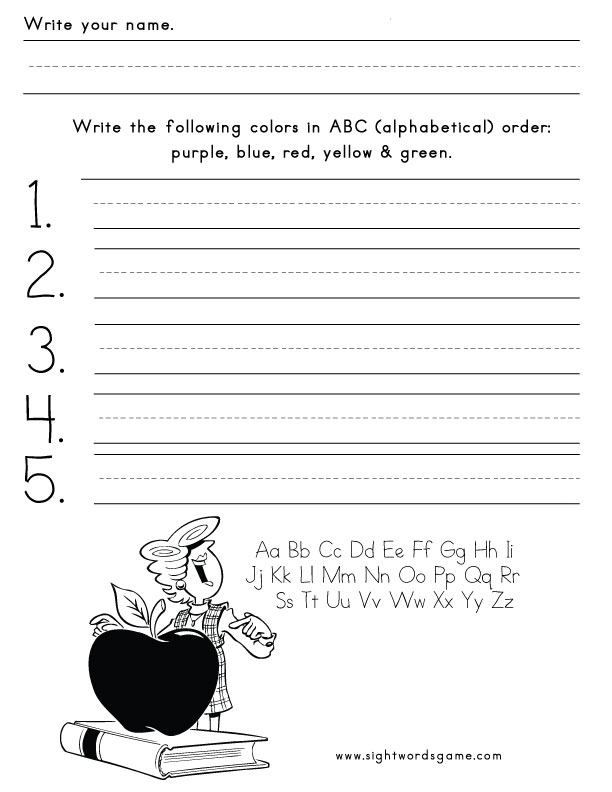 |
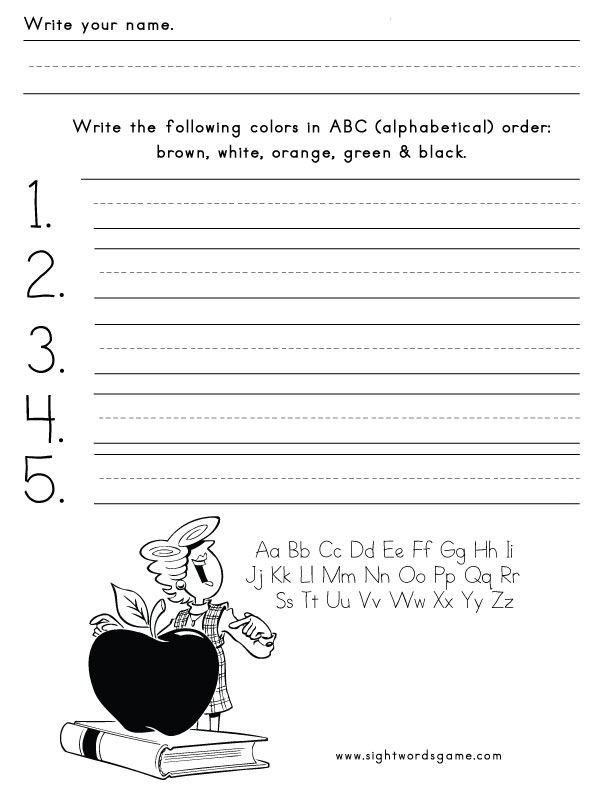 |
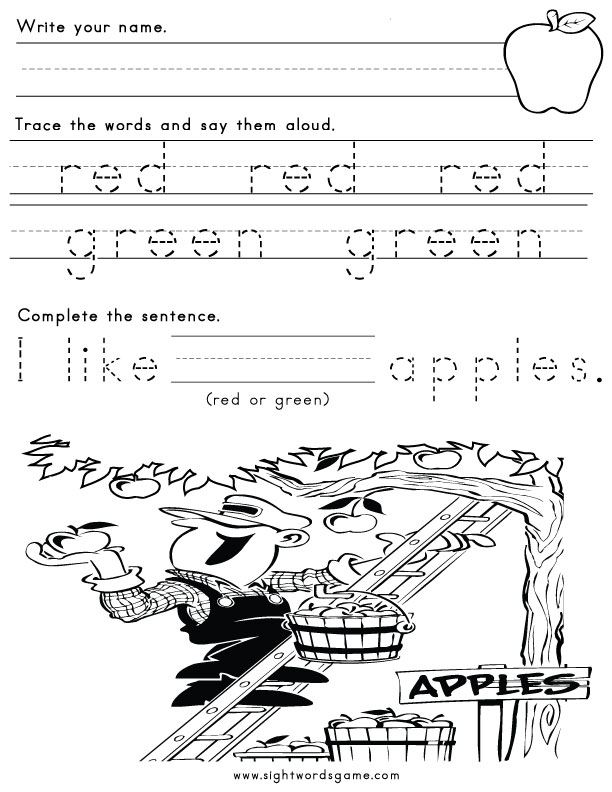 |
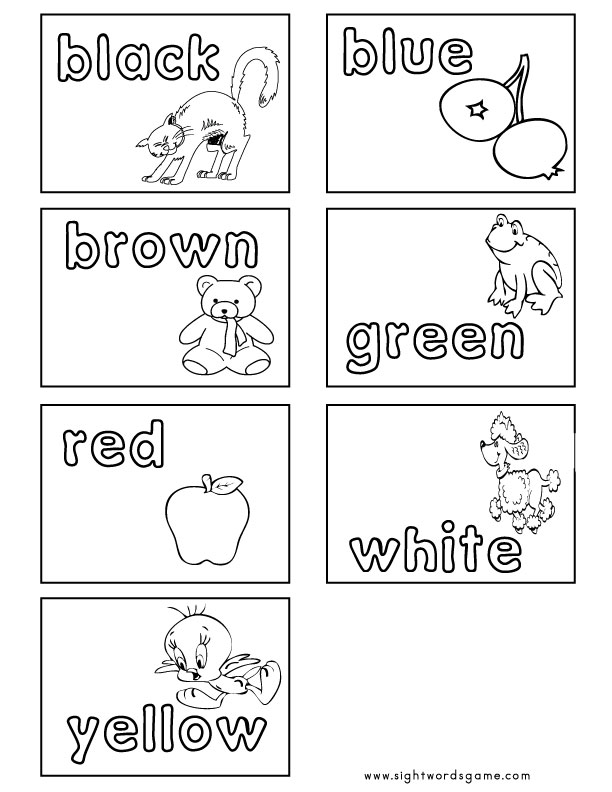 |
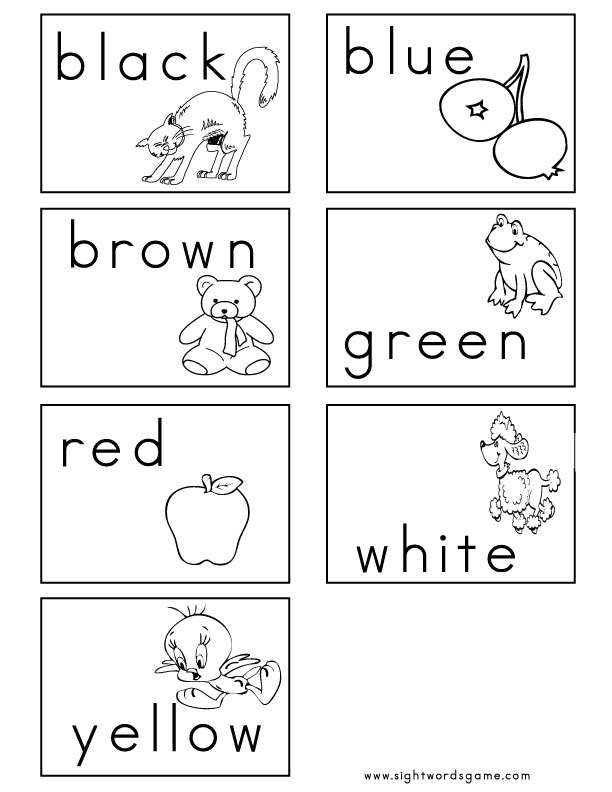 |
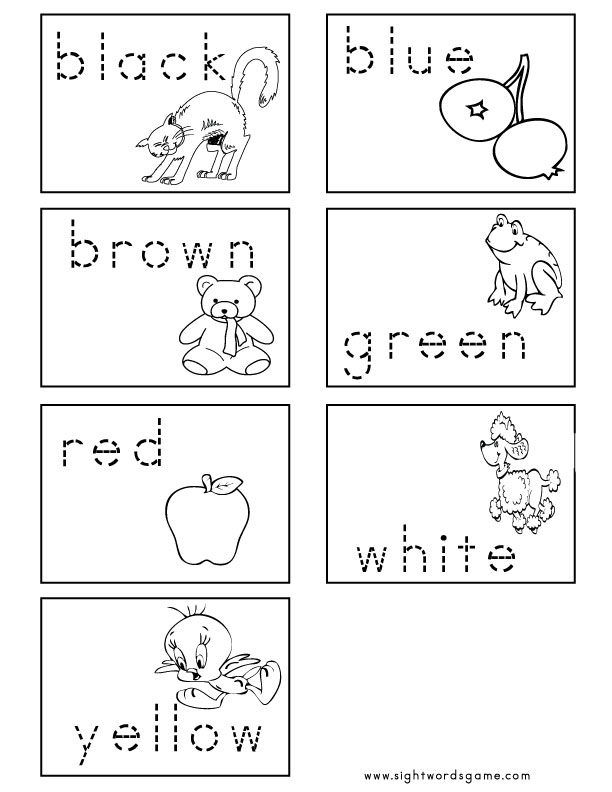 |
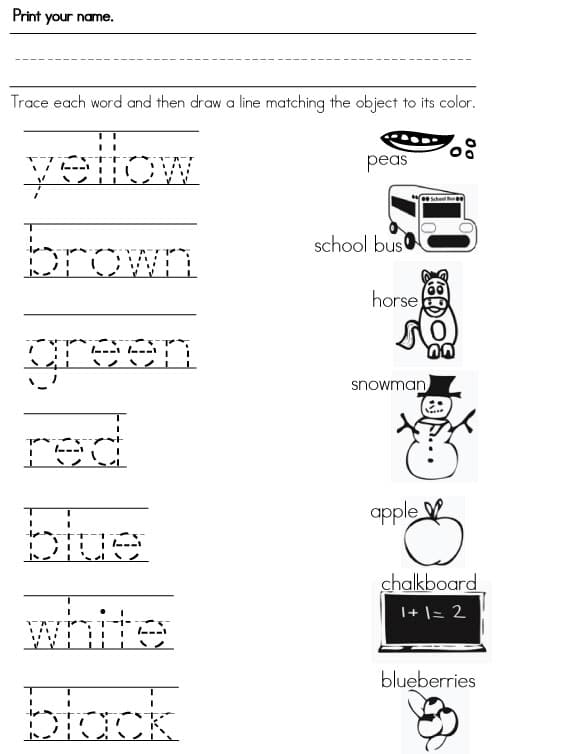 |
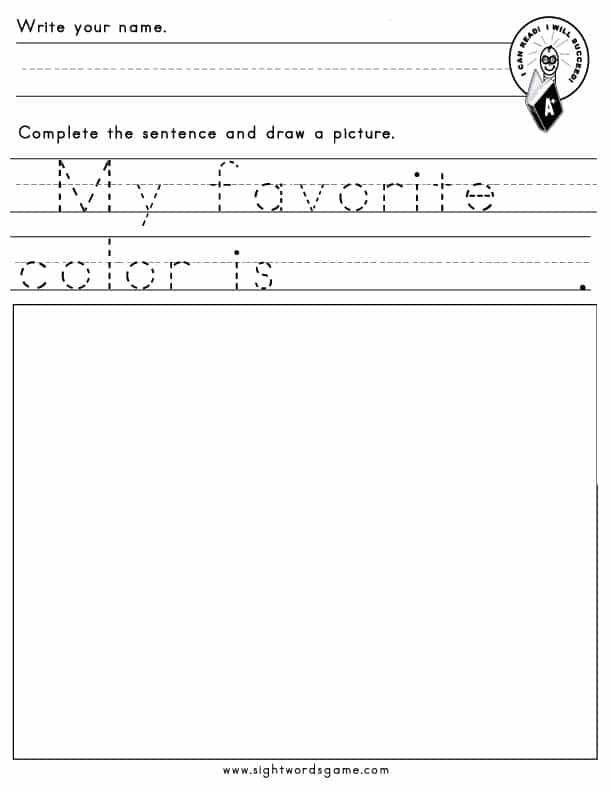 |
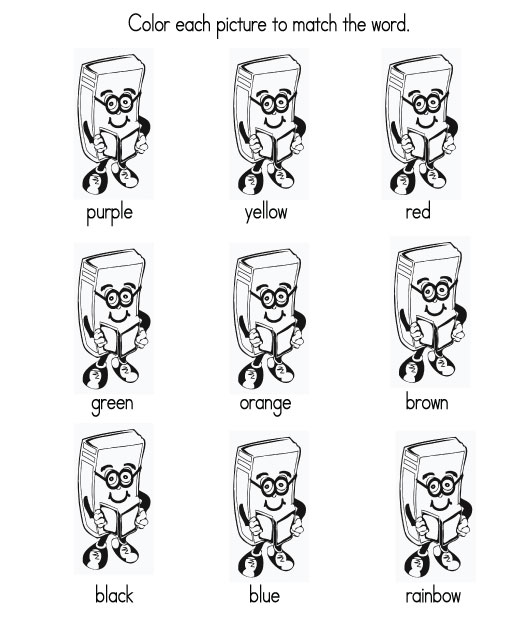 |
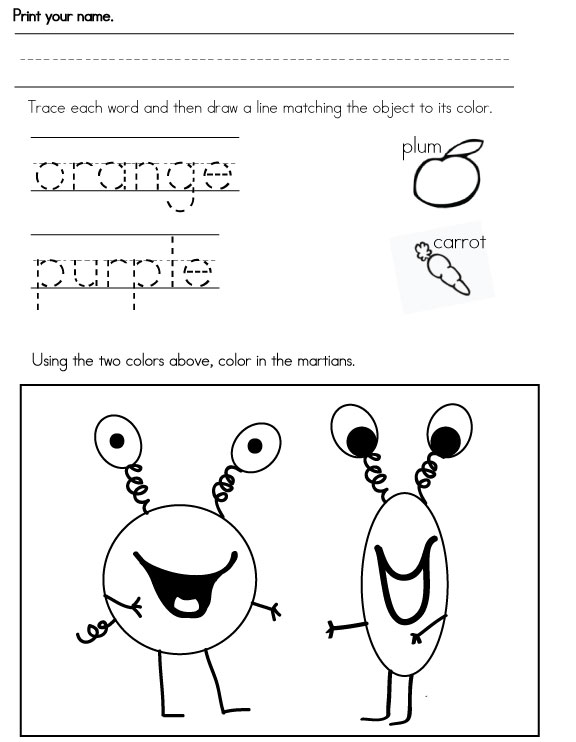 |
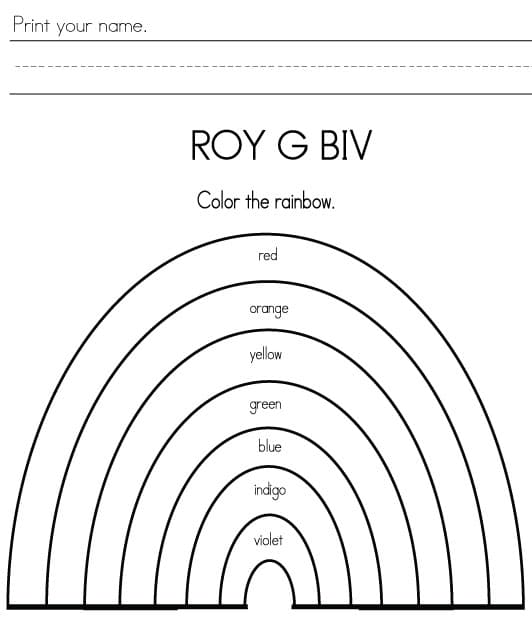 |
Common Colors
Edward William Dolch, Ph.D. created a list of 220 basic sight words that a child should learn to automatically recognize upon sight. This basic sight vocabulary included some colors. Dolch included the following seven colors on his list of 220 sight words.
- black
- blue
- brown
- green
- red
- white
- yellow
The above colors are included on many sight word lists. In addition, we recommend including the following two colors:
- orange
- purple
The words, orange and purple, can be referred to as standalones. In other words, they do not rhyme with another word. Since the English language is filled with patterns and similar sounds, there are only a handful of these words. Can you think of a word that rhymes with purple or orange? If you do, please let us know via our comment section below!
Completing sight word activities are great exercises that assist a child in developing a sight word vocabulary.
This post contains affiliate links. As an Amazon Associate I earn from qualifying purchases.
Today I’m sharing a fun, simple game for teaching your child to read color words.
I created this colorful game to help my Five practice reading the color words: red, blue, black, green, purple, pink, orange, yellow, black, white, and gray. (Note: If you don’t have a color printer, there’s another option! Just zoom down to the P.S. at the end of this post.)
To play, print the game board and the stack of cards. Cut the cards apart. Then grab two playing pieces and a die.
Take turns drawing a card, reading the color word, and moving to the next picture on the board of that color.
Yes, I realize it’s a really long game board. We have a lot of color words to practice!
But don’t worry, it only takes about 5 minutes to play one game.
You can also stop to talk about the words. For example, I asked my Five, “What two letters make the eeee sound in the word green?”
Later I asked him to tell me which two letters say /k/ in the word black.
The first to reach END first, wins.
This is a quick, high-interest game. We hope you enjoy it!
P.S. The download also comes with another version. You can print a game board with color words on the spaces, and pictures on the cards. Don’t want to use all that color ink? Just make a stack of small construction paper squares in the eleven colors. When your child picks up the next square, he moves to that color’s name on the board.
Get your free color words sight word game!
YOU’LL LOVE OUR EDITABLE SIGHT WORD GAMES
Editable Reading Games for Every Season – MEGA PACK!
$24.00
Your students will ASK to practice their sight words when you start using this versatile set of sight word games! Simply type up to 12 words, and they’ll autofill into the 150 seasonal games.
You May Also Enjoy These Posts:
Reader Interactions
Trackbacks

